
Introduction.....
With three successful tours completed in August already I feel I’m on a roll and today I hope to make that four. Compared to early on in the month, the weather is quite settled and although there’s a chill in the air first thing, it is supposed to brighten up later and be ideal for biking. With that in mind and my feeling more confident after recent tours I’m about to tackle one I’ve been putting off for many weeks on account of its difficulty but first just a reminder of how hilly this county is.
Herefordshire lies in a bowl virtually surrounded by hills on all sides. It presents both a challenge and opportunity for biking. It’s interesting that so far, much of my travels has been concentrated to the west of the city following the course of the River Wye or to the north, the course of the River Lugg. Here lies the best opportunity for easier routes but to the east and south it’s a different story. Within reach of the city is Haugh Wood to the east with quite demanding climbs while to the south there are wooded hill almost immediately on exiting the city. This is the area I will concentrate on today. My concern regarding today’s route arises from a sub-10-mile ride to Aconbury on a particularly hot day in July. Since then, the tour has been repeatedly pushed back but today with a little more fitness I cannot hold it back any longer. It’s going to have to get done even if I push the bike up the numerous hills on the way.
Determination and Inclination..... From my home on the south side of the river in Hereford, I am on the right side for this trip and less than 10 minutes into the ride the land rises 20 metres up to Green Crize on the Hoarwithy Road but it’s just a sighter. Less than a mile ahead is a spur rising another 55 metres and I don’t even attempt it. Instead, using a detour as I did before up to Dinedor Cross, I can make the climb over a longer distance. However, it’s still not easy and I have three goes at it but manage to avoid pushing the bike. Linking up with the Hoarwithy Road again the road keeps rising but more gently peaking at 150 metres above msl. There now follows the relief of a fast decline down to Aconbury. This is the furthest point I reached in July when I visited Nether Wood but then I didn’t take the opportunity of visiting the Church of St John the Baptist set off the main road to the right.
No Baptism..... The Former The Church of St John the Baptist was a convent of Austin or Augustinian nuns or canonesses until 1536, later a parish church, now redundant and used as store. It was restored on 1863 by Sir G. G. Scott. It consists of sandstone rubble and dressings with a timber-framed porch, tiled roofs and a shingled bell cot with broad spire and copper weather cock. The base is to a rectangular plan.
Not knowing when it was last used, I at least know that it was in use during WW1 as there are two CWGC burials here. The first is to Private G.H. Day, Royal Lancaster Regiment who died in April 1919. Note that a number of burials I’ve covered so far relate to this period. Many soldiers survived the war only to be smitten by the Spanish Flu pandemic on returning home. The second grave relates to a soldier of the Herefordshire Regiment. Private W. J. Verry died in February 1917 aged 39 and served in the 1st Bn., an active service battalion. It’s a good start but time to move on into unknown territory.
Tough going for a Plough..... I’m now down to 120 metres above msl and need to add to that another 50 metres in the next mile. This is tough requiring several rest stops but again I manage to avoid pushing my bike. At 180 metres I know the worst is behind me and I can now feel confident of reaching my objective as well as conquering my fears. It’s just a short ride to Little Dewchurch now, a village blessed with a pub and a church. Arriving in the village, the sight of the Plough Inn is inviting but there’s still a long way to go and off to the right is Church Road and a rather annoying bank to negotiate.
Preedy Good!.... The wonderful St David's Church is set in the beautiful countryside of South Herefordshire. The site of this church as a place of Christian worship probably dates from Saxon times, but the tower of the present building dates from the 14th century. The tower is built of local sandstone and has four gargoyles on each corner. It contains a peal of six bells, one of which is 14th century, another 17th century, three cast in 1870 and the most recent one was installed in 2005.
The nave and chancel were rebuilt in 1870 and interior refurbished under the guidance of the renowned Victorian architect Frederick Preedy. A leaflet describing other Preedy churches in the area is available at the church. Preedy is responsible for the beautiful east window as well as other windows, for the carved pulpit and font, for ironwork and for the painted zinc reredos panels, which were re-installed in 2007 after being found in the tower.
There are four Art Nouveau candelabras dating from before 1919, and three Art Deco lantern heaters from the 1930s, now used as candelabras for the aisle in the nave. A war memorial is found on the north wall of the nave. As regards CWGC graves in the churchyard there is just one. It’s to Guardsman P. Drinkwater MM (Military Medal winner for galantry), Grenadier Guards who died in March 1919 and as mentioned before died in the period of a raging Sanish Flu pandemic.
Down and Out..... Leaving Little Dewchurch, I’m just a couple of miles from my selected destination today and it’s virtually all downhill as I head towards the River Wye shedding over 100 metres in altitude. There at the base is Hoarwithy and as near I can get to this popular tourist location. This picturesque village lies on the Wye with gorgeous wooded hills rising steeply from its banks. Arriving here as with Little Dewchurch there is a pub and a church, the later in a rather unusual style. Both benefit from tourism and the attractions the river itself provides particularly the canoe centre.
Romanesque and Byzantine in Herefordshire?.... St Catherine's Church in Hoarwithy was originally a chapel built in 1840 and when Prebendary William Poole was appointed vicar of the parish in 1854 he wanted to “beautify the chapel”. The result was the impressive Italianate Romanesque and Byzantine building designed by J.P. Seddon: A gem in rural Herefordshire with fine views from the top churchyard of the church and countryside.
Inside there are wooden carved choir stall figures, marble columns and altar with lapis lazuli with the central cross made of tiger-eye, and a fine Burne-Jones window at the apex of the cluster of windows on the west wall. Over the altar there is a wonderful mosaic of Christ in glory and the hanging lamps are lit at Christmas.
Welcome to St. Catherine's Church, Hoarwithy
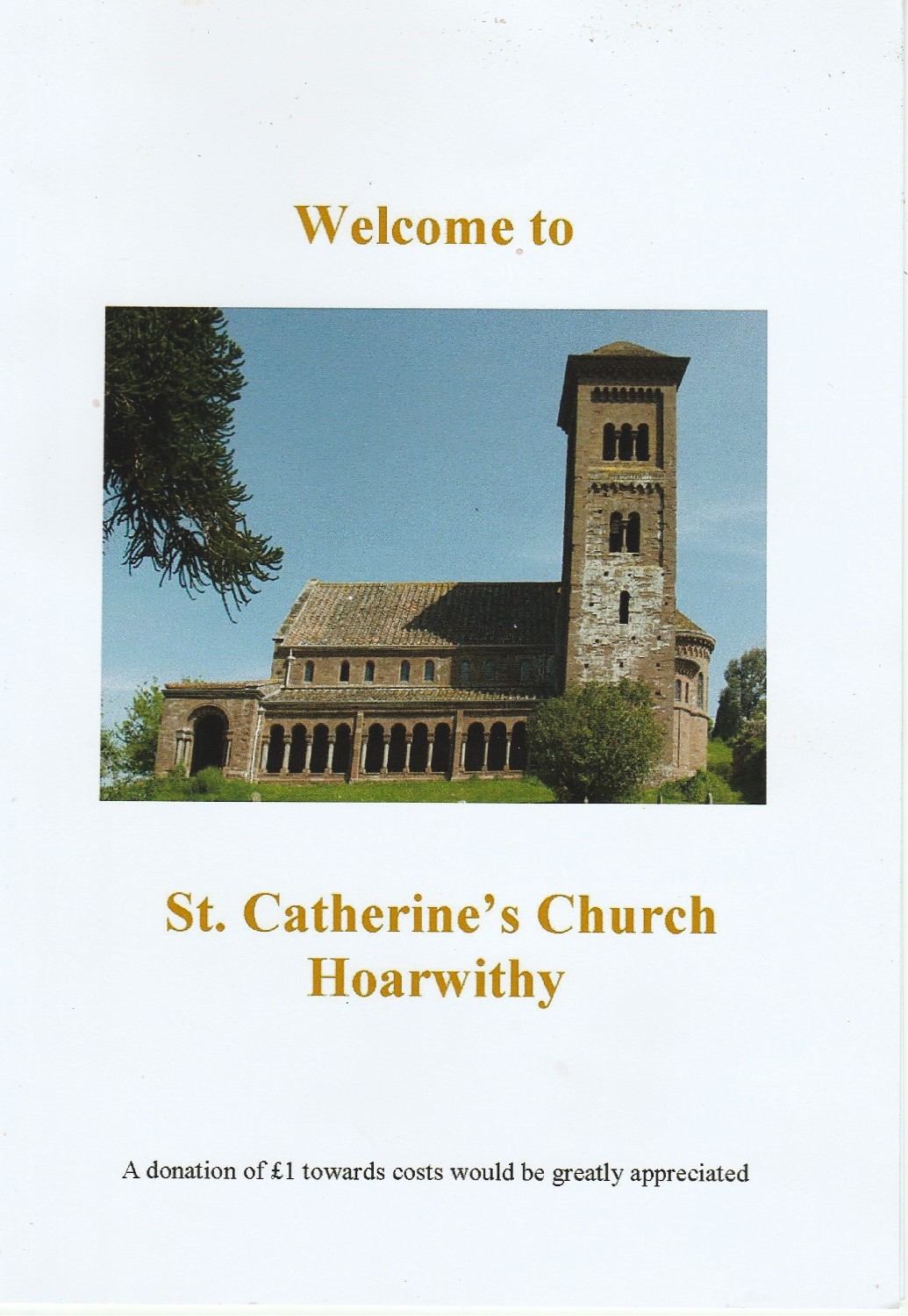
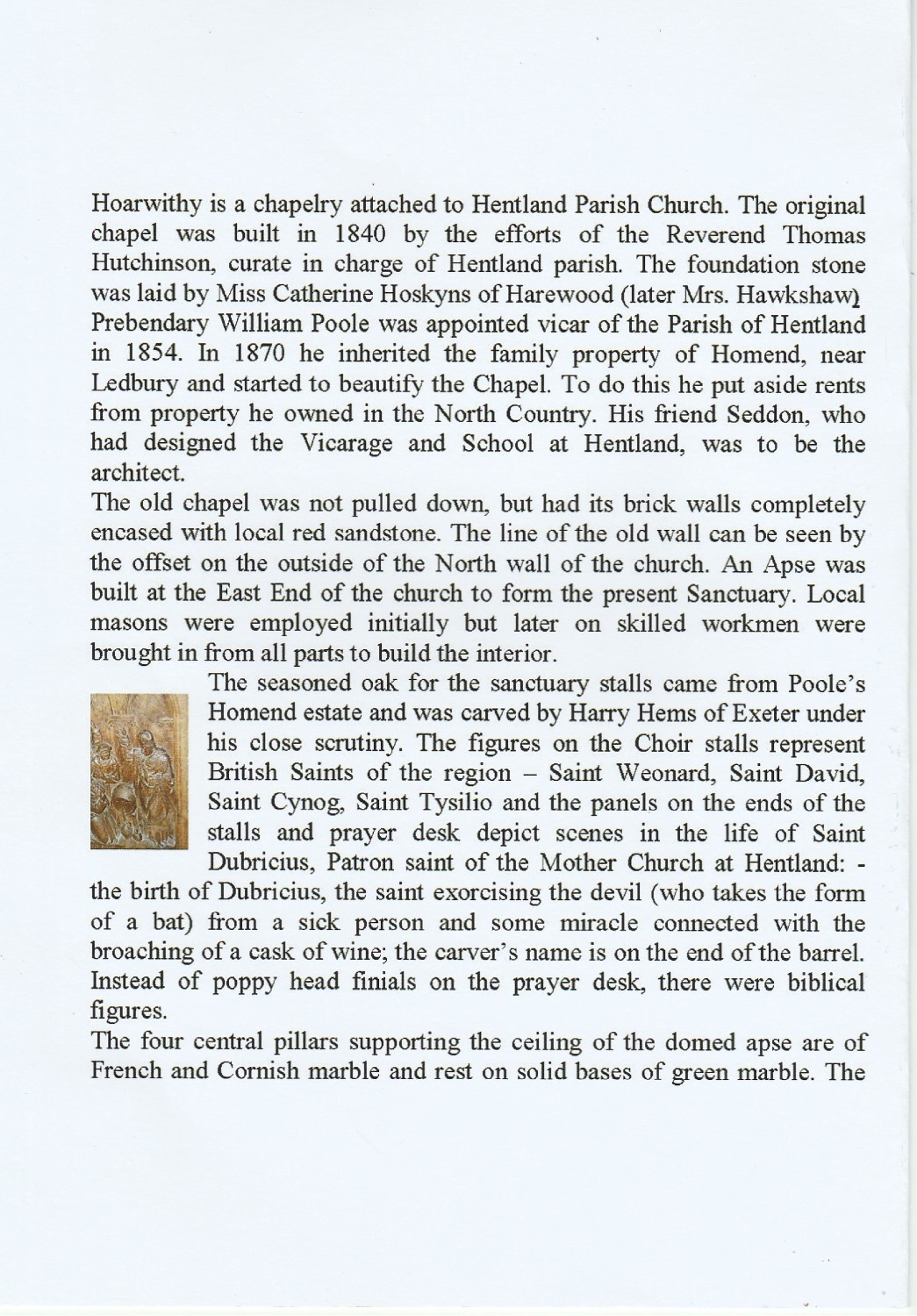
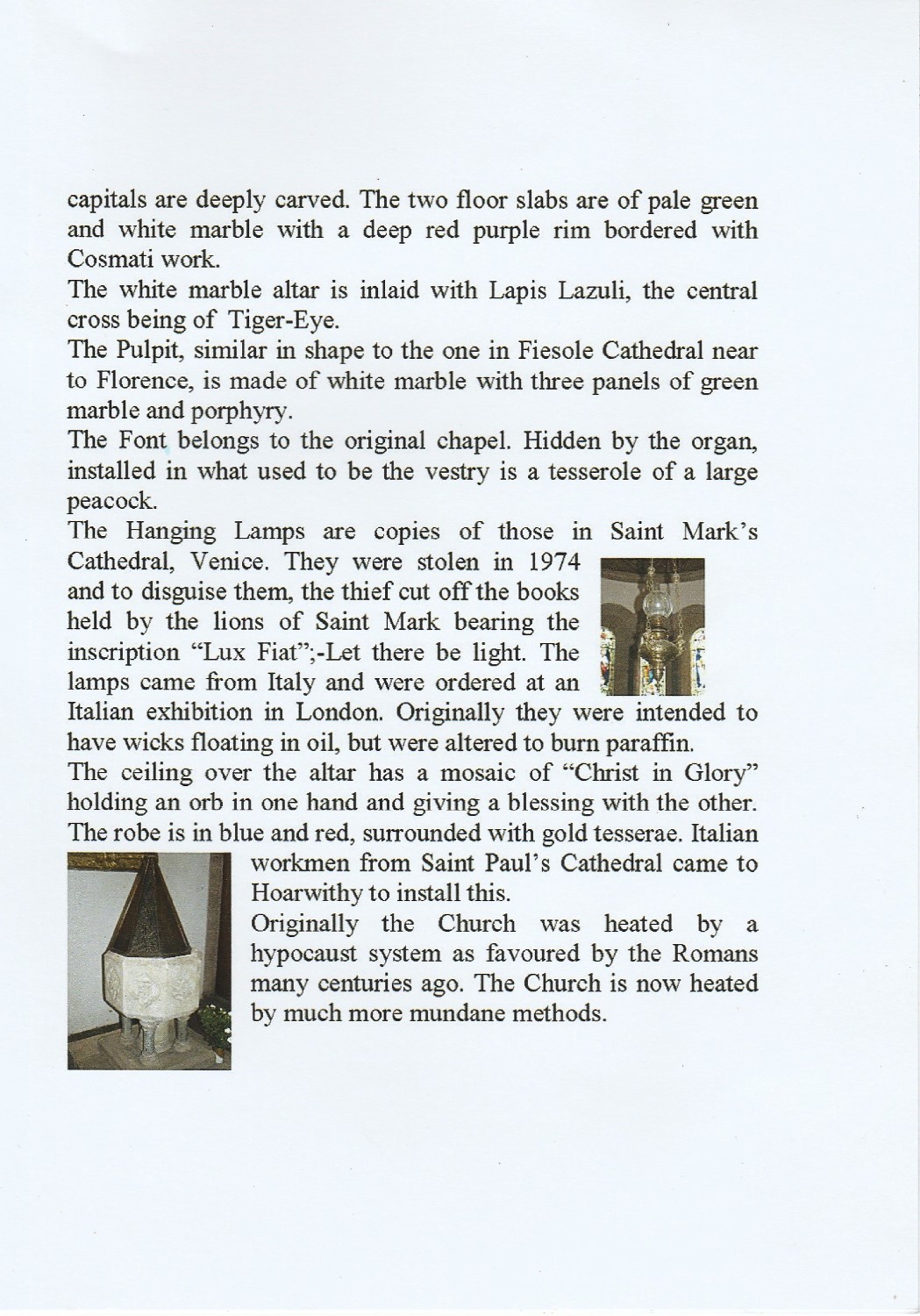
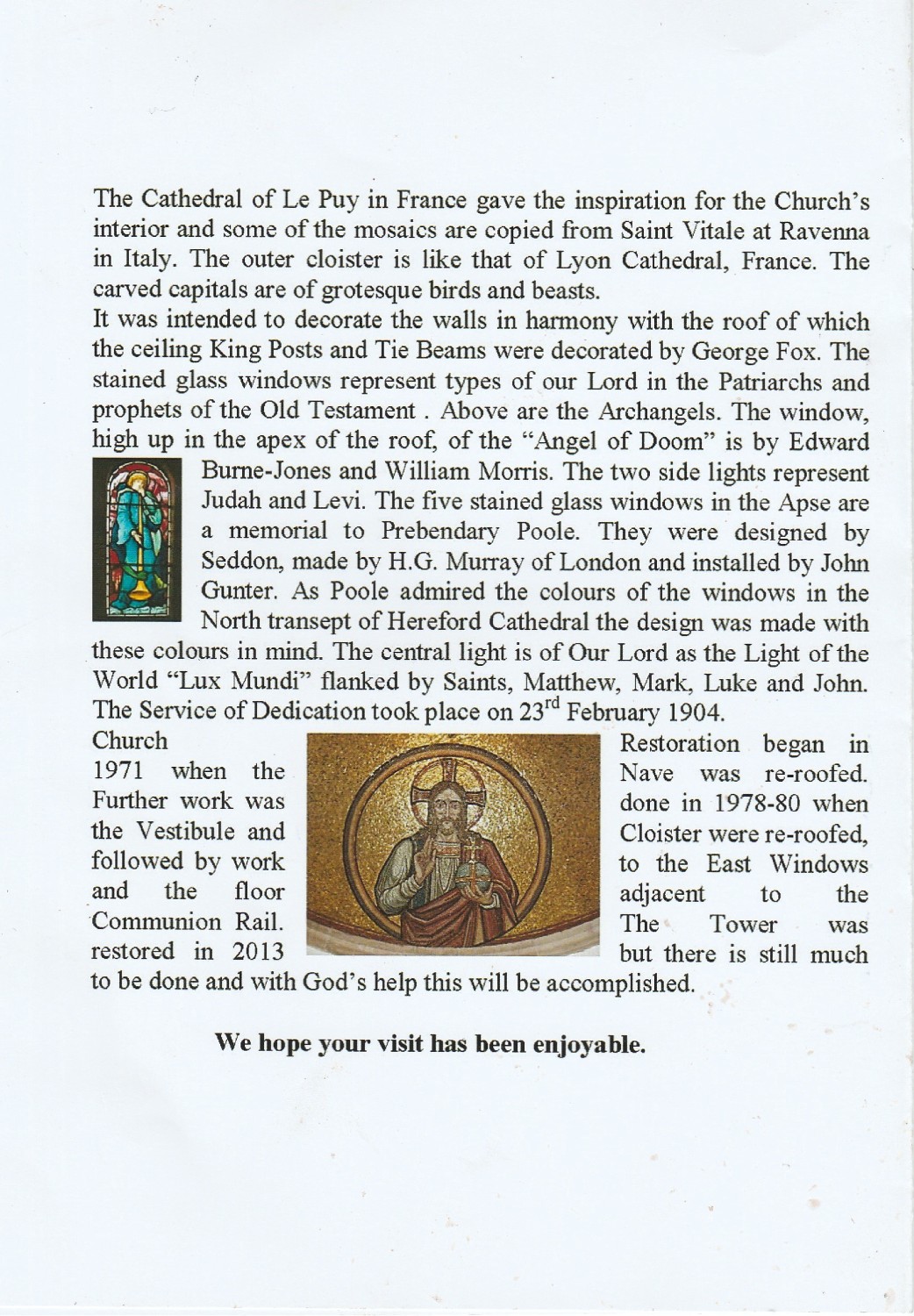 The conversion of an old building beside the church now provides a small meeting room, kitchen area and toilet which greatly helps to welcome several groups of visitors throughout the year. The church is an excellent venue for concerts, with a fine acoustic.
The conversion of an old building beside the church now provides a small meeting room, kitchen area and toilet which greatly helps to welcome several groups of visitors throughout the year. The church is an excellent venue for concerts, with a fine acoustic.
The stonework and masonry on the church tower has recently been restored with the help of grants from English Heritage and others.
Refreshed..... The other attraction in the village is the pub, The New Harp and today I’m in tune with its services sitting outside in quite pleasant sunshine with a glass of cider. But it all too soon disappears and I must focus on the return leg which is quite different from the last. Before that there is a quick visit to Hoarwithy Bridge and one of the few opportunities in the county to cross the River Wye. Watching the leisurely comings and goings of canoes on the river temporarily gives me the feeling of being on holiday but I must move on.
Park and Walk..... Choosing the river route towards Carey, I soon stop at a car park which serves the Bibletts, an area of natural beauty with a five mile walk to admire the nature of Hoarwithy. Well, I’ve brought a packed lunch and wondered where I could consume it. This place beside the river is perfect. Being a little away from the village, this parking area makes sense as there is precious little space in the village itself.
Two Legs an Advantage..... By now I’m committed to an easier but longer route on the return leg and I’m soon passing through Carey with its iconic pub appropriately named The Cottage of Content. It’s well supported this weekend but sadly it’s not for me as time is against me now. I press on towards Ballingham still following the river noting that the course of the Hereford, Ross and Gloucester Railway passed through here before it was closed in 1965. I must make some progress now and press on through the village towards Holme Lacy. It’s a longer stretch but with no hills to speak of I’m able to claw back some time. Nevertheless, there is another church I cannot miss out but it’s quite a detour off the main road.
Lost to Time..... Reaching the junction, I follow the sign marked 'Historic Church'. That has me wondering what I might find. St Cuthbert’s Church lies at the end of a minor road that leads to the river enclosing it in a horseshoe bend. Information on this location is provided immediately at the gate.
The present church dates from the late 13th century, with the west tower added in the 14th century but today it is not in use for regular worship. The plaque on the wall simply states that the church is cared for by the Churches Conservation Trust and remains a consecrated building as part of England’s history maintained for the benefit of this and future generations. I proceed to examine the exterior both to take photos and check for any military burials but there are none. I hope now that the church itself is open. It is and one is greeted immediately by a caged door put there to ensure birds don’t get trapped inside. Remember this is now a monument and is not supported by a community. Entering through this door, I arrive in a different world, one that existed way back in Medieval Times. The nave is dark and eyry but you just know there is history here; the relics of the past shout at you from the walls, floor and every corner of this historic church.
Angels, a Demon and Knights in Shining Armour..... The Scudamore family were patrons of the church from Medieval times until the twentieth century, and their monuments are a spectacular treasure. The church also has monuments to the Lucas-Tooth family who bought the estate in 1909. John Scudamore, who died in 1571 lies beside his wife on a tomb chest, decked out in full armour. James Scudamore, who died in 1668, wears Roman costume in a great wedding cake of a wall monument - possibly by Grinling Gibbons. There is also a Victorian monument to a naval captain which shows a fleet of fully rigged ships. There are even some twentieth-century monuments - in the churchyard is a memorial to Edwyn Scudamore Stanhope, who died in 1933, pictured as a heroic knight in armour.
Beautiful stained glass also delights the eye. Most of it is nineteenth and twentieth century, though the chancel north window is made up of fragments of medieval glass.
In the nave is a striking window showing two of King Arthur's knights, given in memory of Archibald Lucas-Tooth, who died in World War I. His father, Sir Robert, is commemorated in the wonderful glass in the great east window, showing St Michael weighing souls.
Other treasures to look for include the unusual seventeenth-century font, with its elegant stem and richly decorated bowl, and the carvings on the medieval stalls, showing angels, men, a horned demon and a dog.
Our Heritage..... Finally, as you would expect, there is and information desk. Among various pieces of information is a copy of The Picture Postcard Heritage of Herefordshire Churches by John Farr. This complimentary copy for the church is a priceless archive of information and photographs relating to Herefordshire Churches. It is sadly out of print with even a paperback copy now selling for not far short of £100. I guess much of this information is now online which is no help to John. However, there is an email address where he can be contacted. Clearly St Cuthbert’s Church is a must for visitors to this area and I’m really glad to be here.
Mind over Matter..... As I make my way back, I need to pass through Holme Lacy village but from here there is still more than a couple of miles back to the city outskirts. I’m now feeling the effects of a long day not helped by more undulating terrain and traffic on this route which can get busy. It’s curious then, that I add more distance and time to the day by choosing a back way home via the village of Dinedor. I’m tempted by the location of another church figuring that it would avoid me coming this way again. Well, call me crazy but I figure it will be worth the effort. Dinedor Church is small but I just can’t ignore it.
Resurrected..... By the 19th century St Andrew’s Church was completely dilapidated but was rebuilt in 1867-8 by F. R. Kempson. It was reported that on a Monday in June 1867, the foundation stone of the new church was laid under a cloudless sky. Most of the 250 parishioners gathered to witness the ceremony.
The new church would have completely new flooring, with wood under the seats and encaustic tiles elsewhere, sourced from Mr. Godwin’s works at Lugwardine.
The seats in the nave, the pulpit and the stalls as well as the altar table would all be new, and the roof would be slated and not tiled as the old one was.
The interior walls would be finished with Ashlar stone from Sir Edwyn Stanhope’s quarry at Ballingham, and heating would be provided by one of Rimmington’s apparatuses.
The tower would not be raised higher as it was hoped as there would be enough funds to put a new arch within it.
All in all, the style would be of 13th century, with the builder being Mr. T. Stone of Fownhope and the cost was estimated at between £600 and £700: This amount of money in those days demonstrates the religious conviction that still existed in Victorian Britain.
Scratch another Tour..... Well, that should be it for today. As the minor road skirts around the southern slopes of Dinedor Hill, the location of an Iron Age Fort, I’m shattered but baffled by the sheer volume of history that exists so close to home. Reaching Dinedor Cross once more, it’s an easy run now back home. Arriving home at 4.15pm, wiriness excluded, this is stretching the limits of time I’d like to allocate to these trips but then this was never going to be an easy day. Conclusion.....Well, I did it. Not only was it a physical barrier but a psychological one broken today where both altitude and distance came into play. However, I’m a realist and have no plans to try to extend these gains to any great extent. There are still a good number of outlying villages to explore and there is little at altitude above 200 metres within 10 miles radius of the city to worry about. I think, weather permitting that the remaining outlying villages within a sensible distance from home can be covered in September but it’s only a matter of time now before I fit my bike rack to my car and extend my range.
Herefordshire lies in a bowl virtually surrounded by hills on all sides. It presents both a challenge and opportunity for biking. It’s interesting that so far, much of my travels has been concentrated to the west of the city following the course of the River Wye or to the north, the course of the River Lugg. Here lies the best opportunity for easier routes but to the east and south it’s a different story. Within reach of the city is Haugh Wood to the east with quite demanding climbs while to the south there are wooded hill almost immediately on exiting the city. This is the area I will concentrate on today. My concern regarding today’s route arises from a sub-10-mile ride to Aconbury on a particularly hot day in July. Since then, the tour has been repeatedly pushed back but today with a little more fitness I cannot hold it back any longer. It’s going to have to get done even if I push the bike up the numerous hills on the way.
Determination and Inclination..... From my home on the south side of the river in Hereford, I am on the right side for this trip and less than 10 minutes into the ride the land rises 20 metres up to Green Crize on the Hoarwithy Road but it’s just a sighter. Less than a mile ahead is a spur rising another 55 metres and I don’t even attempt it. Instead, using a detour as I did before up to Dinedor Cross, I can make the climb over a longer distance. However, it’s still not easy and I have three goes at it but manage to avoid pushing the bike. Linking up with the Hoarwithy Road again the road keeps rising but more gently peaking at 150 metres above msl. There now follows the relief of a fast decline down to Aconbury. This is the furthest point I reached in July when I visited Nether Wood but then I didn’t take the opportunity of visiting the Church of St John the Baptist set off the main road to the right.
No Baptism..... The Former The Church of St John the Baptist was a convent of Austin or Augustinian nuns or canonesses until 1536, later a parish church, now redundant and used as store. It was restored on 1863 by Sir G. G. Scott. It consists of sandstone rubble and dressings with a timber-framed porch, tiled roofs and a shingled bell cot with broad spire and copper weather cock. The base is to a rectangular plan.
Not knowing when it was last used, I at least know that it was in use during WW1 as there are two CWGC burials here. The first is to Private G.H. Day, Royal Lancaster Regiment who died in April 1919. Note that a number of burials I’ve covered so far relate to this period. Many soldiers survived the war only to be smitten by the Spanish Flu pandemic on returning home. The second grave relates to a soldier of the Herefordshire Regiment. Private W. J. Verry died in February 1917 aged 39 and served in the 1st Bn., an active service battalion. It’s a good start but time to move on into unknown territory.
Tough going for a Plough..... I’m now down to 120 metres above msl and need to add to that another 50 metres in the next mile. This is tough requiring several rest stops but again I manage to avoid pushing my bike. At 180 metres I know the worst is behind me and I can now feel confident of reaching my objective as well as conquering my fears. It’s just a short ride to Little Dewchurch now, a village blessed with a pub and a church. Arriving in the village, the sight of the Plough Inn is inviting but there’s still a long way to go and off to the right is Church Road and a rather annoying bank to negotiate.
Preedy Good!.... The wonderful St David's Church is set in the beautiful countryside of South Herefordshire. The site of this church as a place of Christian worship probably dates from Saxon times, but the tower of the present building dates from the 14th century. The tower is built of local sandstone and has four gargoyles on each corner. It contains a peal of six bells, one of which is 14th century, another 17th century, three cast in 1870 and the most recent one was installed in 2005.
The nave and chancel were rebuilt in 1870 and interior refurbished under the guidance of the renowned Victorian architect Frederick Preedy. A leaflet describing other Preedy churches in the area is available at the church. Preedy is responsible for the beautiful east window as well as other windows, for the carved pulpit and font, for ironwork and for the painted zinc reredos panels, which were re-installed in 2007 after being found in the tower.
There are four Art Nouveau candelabras dating from before 1919, and three Art Deco lantern heaters from the 1930s, now used as candelabras for the aisle in the nave. A war memorial is found on the north wall of the nave. As regards CWGC graves in the churchyard there is just one. It’s to Guardsman P. Drinkwater MM (Military Medal winner for galantry), Grenadier Guards who died in March 1919 and as mentioned before died in the period of a raging Sanish Flu pandemic.
Down and Out..... Leaving Little Dewchurch, I’m just a couple of miles from my selected destination today and it’s virtually all downhill as I head towards the River Wye shedding over 100 metres in altitude. There at the base is Hoarwithy and as near I can get to this popular tourist location. This picturesque village lies on the Wye with gorgeous wooded hills rising steeply from its banks. Arriving here as with Little Dewchurch there is a pub and a church, the later in a rather unusual style. Both benefit from tourism and the attractions the river itself provides particularly the canoe centre.
Romanesque and Byzantine in Herefordshire?.... St Catherine's Church in Hoarwithy was originally a chapel built in 1840 and when Prebendary William Poole was appointed vicar of the parish in 1854 he wanted to “beautify the chapel”. The result was the impressive Italianate Romanesque and Byzantine building designed by J.P. Seddon: A gem in rural Herefordshire with fine views from the top churchyard of the church and countryside.
Inside there are wooden carved choir stall figures, marble columns and altar with lapis lazuli with the central cross made of tiger-eye, and a fine Burne-Jones window at the apex of the cluster of windows on the west wall. Over the altar there is a wonderful mosaic of Christ in glory and the hanging lamps are lit at Christmas.



 The conversion of an old building beside the church now provides a small meeting room, kitchen area and toilet which greatly helps to welcome several groups of visitors throughout the year. The church is an excellent venue for concerts, with a fine acoustic.
The conversion of an old building beside the church now provides a small meeting room, kitchen area and toilet which greatly helps to welcome several groups of visitors throughout the year. The church is an excellent venue for concerts, with a fine acoustic.The stonework and masonry on the church tower has recently been restored with the help of grants from English Heritage and others.
Refreshed..... The other attraction in the village is the pub, The New Harp and today I’m in tune with its services sitting outside in quite pleasant sunshine with a glass of cider. But it all too soon disappears and I must focus on the return leg which is quite different from the last. Before that there is a quick visit to Hoarwithy Bridge and one of the few opportunities in the county to cross the River Wye. Watching the leisurely comings and goings of canoes on the river temporarily gives me the feeling of being on holiday but I must move on.
Park and Walk..... Choosing the river route towards Carey, I soon stop at a car park which serves the Bibletts, an area of natural beauty with a five mile walk to admire the nature of Hoarwithy. Well, I’ve brought a packed lunch and wondered where I could consume it. This place beside the river is perfect. Being a little away from the village, this parking area makes sense as there is precious little space in the village itself.
Two Legs an Advantage..... By now I’m committed to an easier but longer route on the return leg and I’m soon passing through Carey with its iconic pub appropriately named The Cottage of Content. It’s well supported this weekend but sadly it’s not for me as time is against me now. I press on towards Ballingham still following the river noting that the course of the Hereford, Ross and Gloucester Railway passed through here before it was closed in 1965. I must make some progress now and press on through the village towards Holme Lacy. It’s a longer stretch but with no hills to speak of I’m able to claw back some time. Nevertheless, there is another church I cannot miss out but it’s quite a detour off the main road.
Lost to Time..... Reaching the junction, I follow the sign marked 'Historic Church'. That has me wondering what I might find. St Cuthbert’s Church lies at the end of a minor road that leads to the river enclosing it in a horseshoe bend. Information on this location is provided immediately at the gate.
The present church dates from the late 13th century, with the west tower added in the 14th century but today it is not in use for regular worship. The plaque on the wall simply states that the church is cared for by the Churches Conservation Trust and remains a consecrated building as part of England’s history maintained for the benefit of this and future generations. I proceed to examine the exterior both to take photos and check for any military burials but there are none. I hope now that the church itself is open. It is and one is greeted immediately by a caged door put there to ensure birds don’t get trapped inside. Remember this is now a monument and is not supported by a community. Entering through this door, I arrive in a different world, one that existed way back in Medieval Times. The nave is dark and eyry but you just know there is history here; the relics of the past shout at you from the walls, floor and every corner of this historic church.
Angels, a Demon and Knights in Shining Armour..... The Scudamore family were patrons of the church from Medieval times until the twentieth century, and their monuments are a spectacular treasure. The church also has monuments to the Lucas-Tooth family who bought the estate in 1909. John Scudamore, who died in 1571 lies beside his wife on a tomb chest, decked out in full armour. James Scudamore, who died in 1668, wears Roman costume in a great wedding cake of a wall monument - possibly by Grinling Gibbons. There is also a Victorian monument to a naval captain which shows a fleet of fully rigged ships. There are even some twentieth-century monuments - in the churchyard is a memorial to Edwyn Scudamore Stanhope, who died in 1933, pictured as a heroic knight in armour.
Beautiful stained glass also delights the eye. Most of it is nineteenth and twentieth century, though the chancel north window is made up of fragments of medieval glass.
In the nave is a striking window showing two of King Arthur's knights, given in memory of Archibald Lucas-Tooth, who died in World War I. His father, Sir Robert, is commemorated in the wonderful glass in the great east window, showing St Michael weighing souls.
Other treasures to look for include the unusual seventeenth-century font, with its elegant stem and richly decorated bowl, and the carvings on the medieval stalls, showing angels, men, a horned demon and a dog.
Our Heritage..... Finally, as you would expect, there is and information desk. Among various pieces of information is a copy of The Picture Postcard Heritage of Herefordshire Churches by John Farr. This complimentary copy for the church is a priceless archive of information and photographs relating to Herefordshire Churches. It is sadly out of print with even a paperback copy now selling for not far short of £100. I guess much of this information is now online which is no help to John. However, there is an email address where he can be contacted. Clearly St Cuthbert’s Church is a must for visitors to this area and I’m really glad to be here.
Mind over Matter..... As I make my way back, I need to pass through Holme Lacy village but from here there is still more than a couple of miles back to the city outskirts. I’m now feeling the effects of a long day not helped by more undulating terrain and traffic on this route which can get busy. It’s curious then, that I add more distance and time to the day by choosing a back way home via the village of Dinedor. I’m tempted by the location of another church figuring that it would avoid me coming this way again. Well, call me crazy but I figure it will be worth the effort. Dinedor Church is small but I just can’t ignore it.
Resurrected..... By the 19th century St Andrew’s Church was completely dilapidated but was rebuilt in 1867-8 by F. R. Kempson. It was reported that on a Monday in June 1867, the foundation stone of the new church was laid under a cloudless sky. Most of the 250 parishioners gathered to witness the ceremony.
The new church would have completely new flooring, with wood under the seats and encaustic tiles elsewhere, sourced from Mr. Godwin’s works at Lugwardine.
The seats in the nave, the pulpit and the stalls as well as the altar table would all be new, and the roof would be slated and not tiled as the old one was.
The interior walls would be finished with Ashlar stone from Sir Edwyn Stanhope’s quarry at Ballingham, and heating would be provided by one of Rimmington’s apparatuses.
The tower would not be raised higher as it was hoped as there would be enough funds to put a new arch within it.
All in all, the style would be of 13th century, with the builder being Mr. T. Stone of Fownhope and the cost was estimated at between £600 and £700: This amount of money in those days demonstrates the religious conviction that still existed in Victorian Britain.
Scratch another Tour..... Well, that should be it for today. As the minor road skirts around the southern slopes of Dinedor Hill, the location of an Iron Age Fort, I’m shattered but baffled by the sheer volume of history that exists so close to home. Reaching Dinedor Cross once more, it’s an easy run now back home. Arriving home at 4.15pm, wiriness excluded, this is stretching the limits of time I’d like to allocate to these trips but then this was never going to be an easy day. Conclusion.....Well, I did it. Not only was it a physical barrier but a psychological one broken today where both altitude and distance came into play. However, I’m a realist and have no plans to try to extend these gains to any great extent. There are still a good number of outlying villages to explore and there is little at altitude above 200 metres within 10 miles radius of the city to worry about. I think, weather permitting that the remaining outlying villages within a sensible distance from home can be covered in September but it’s only a matter of time now before I fit my bike rack to my car and extend my range.
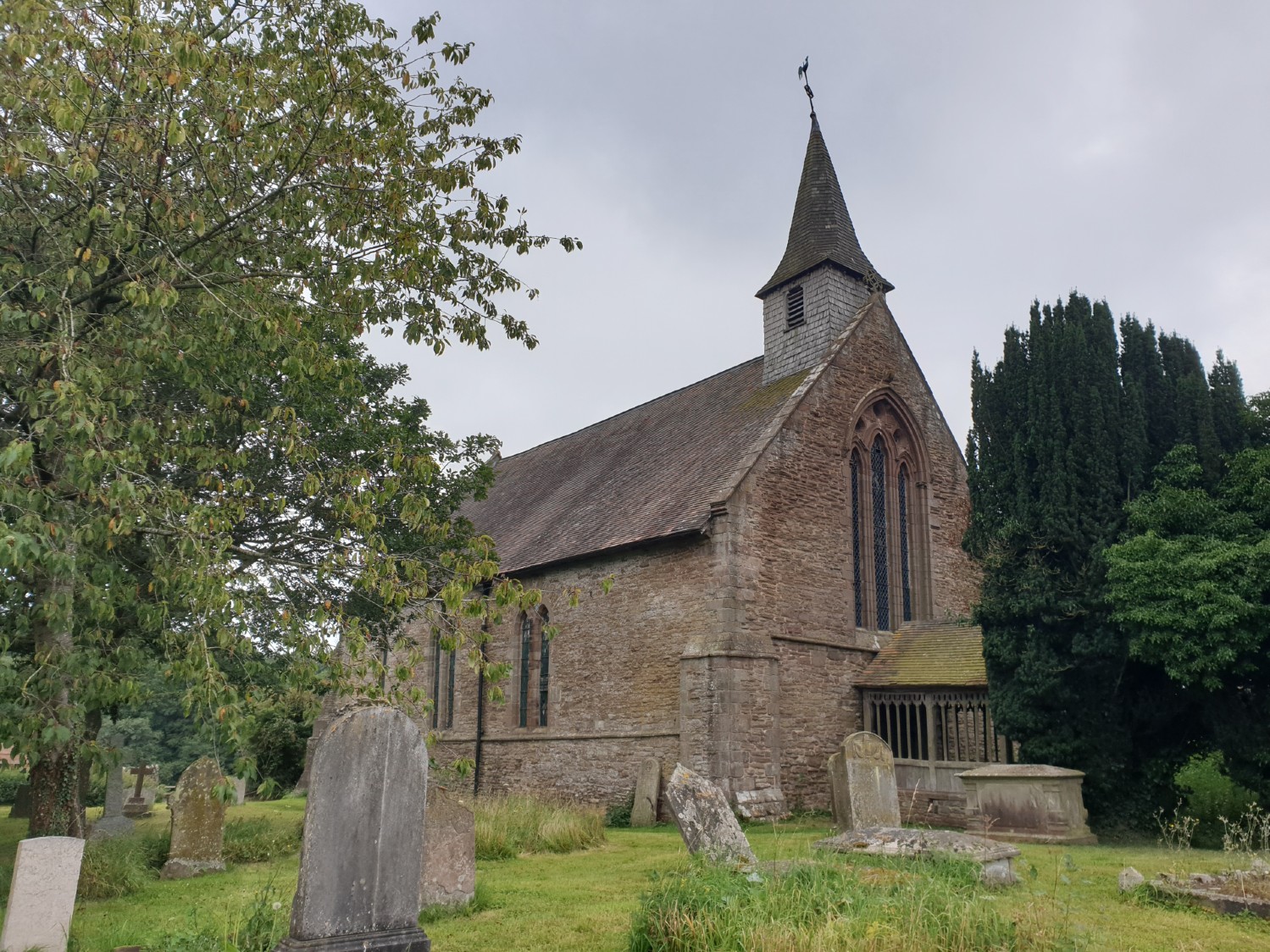
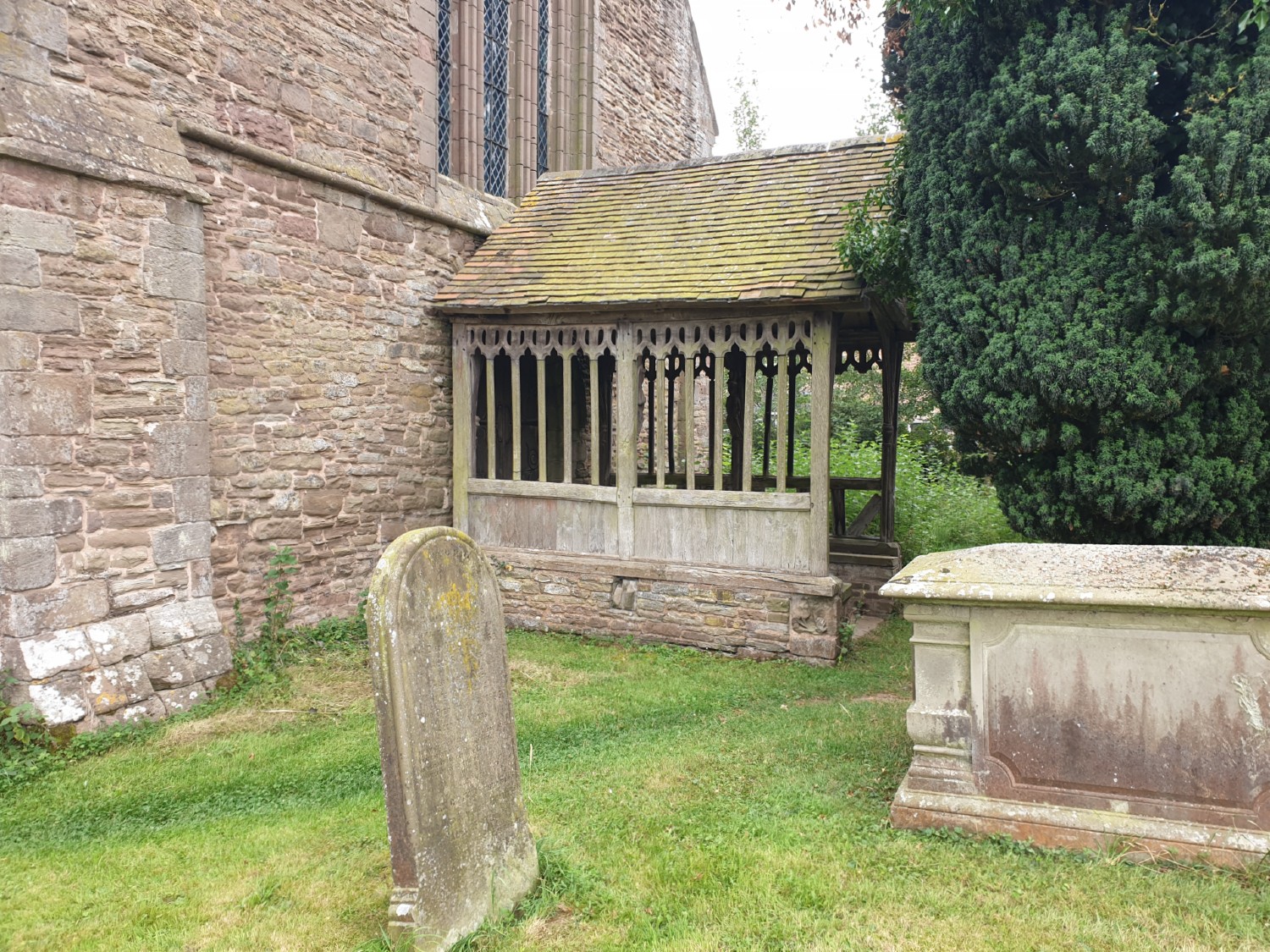
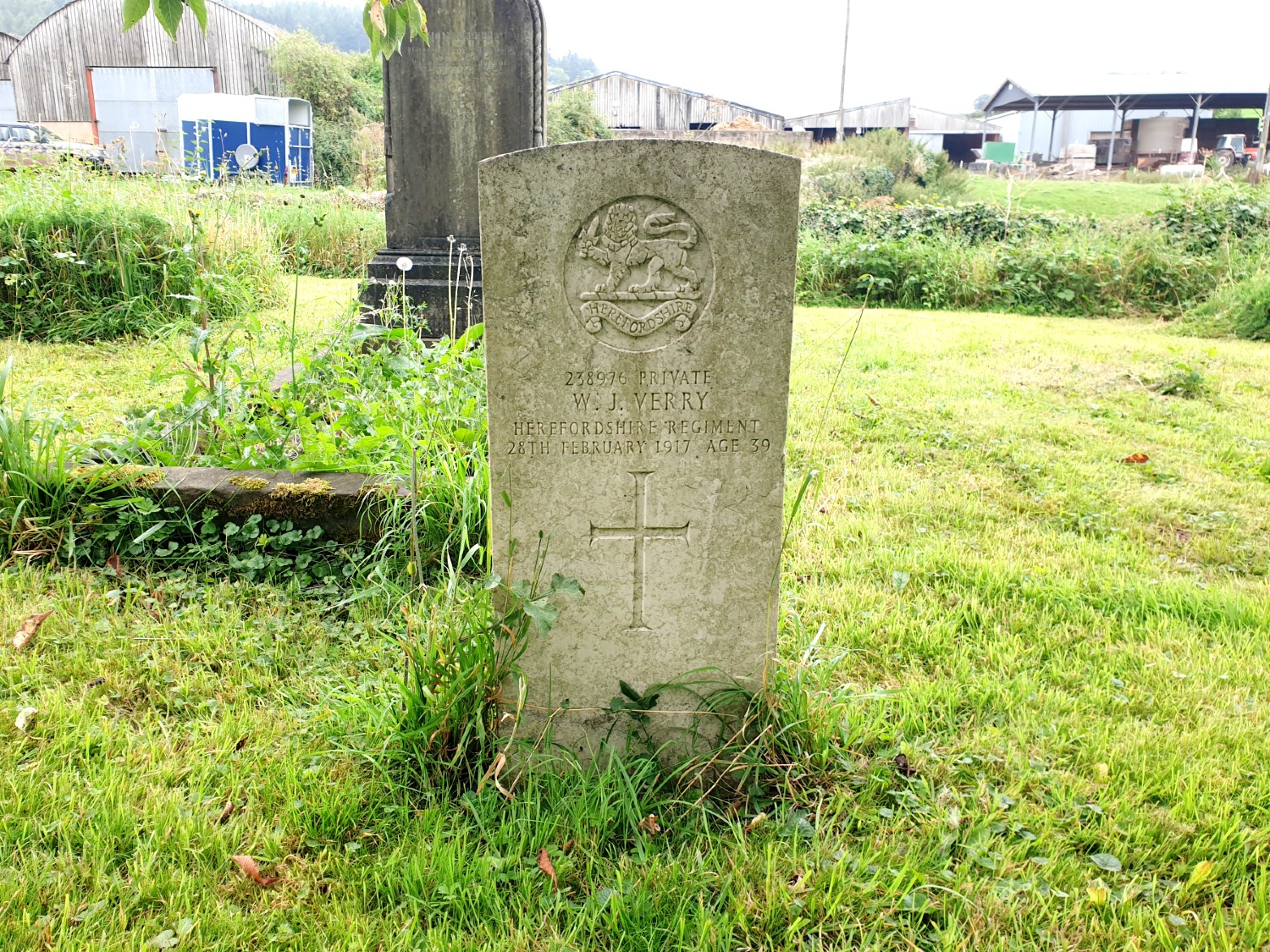
Church of St John the Baptist, Aconbury....Map
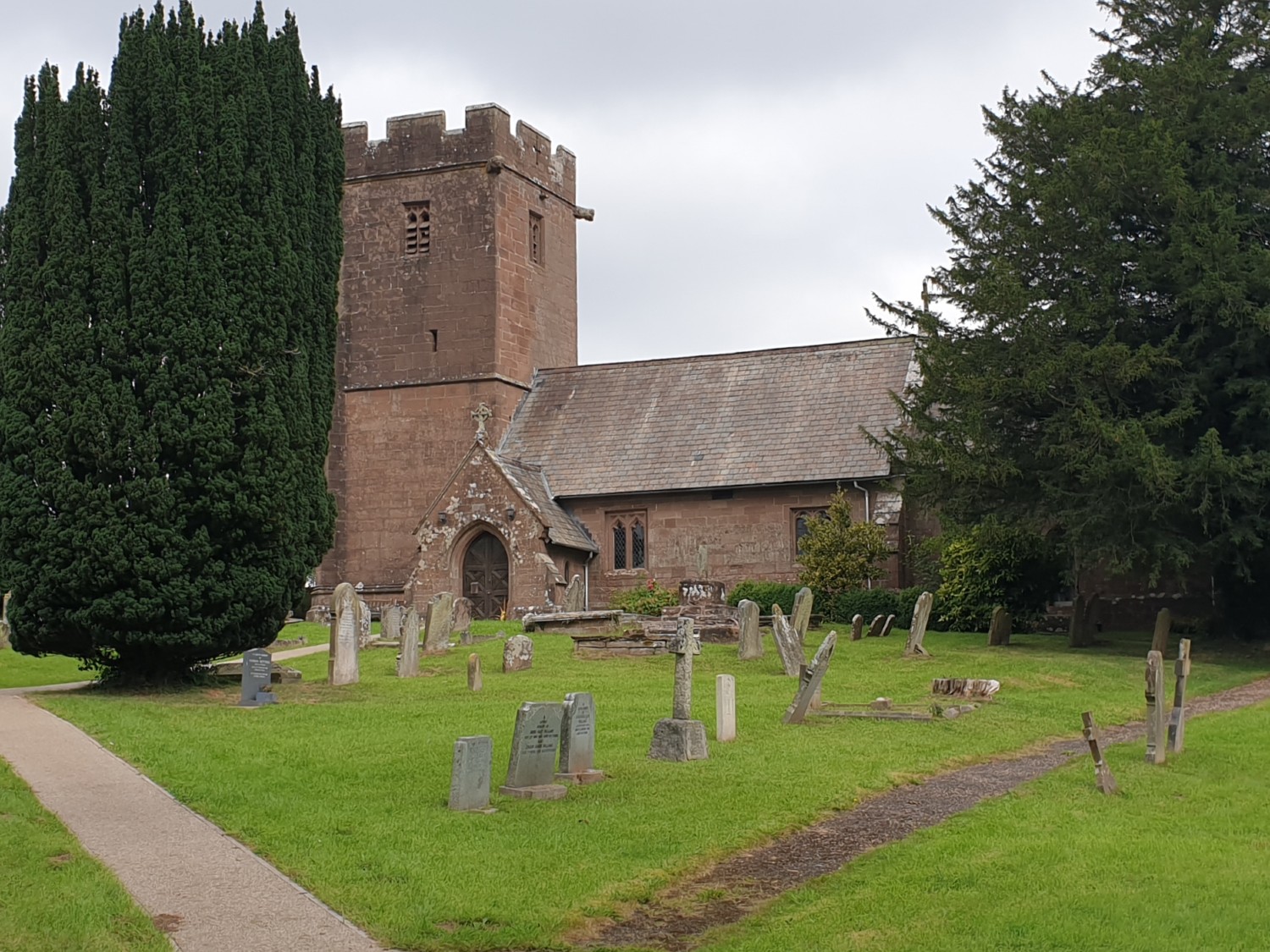
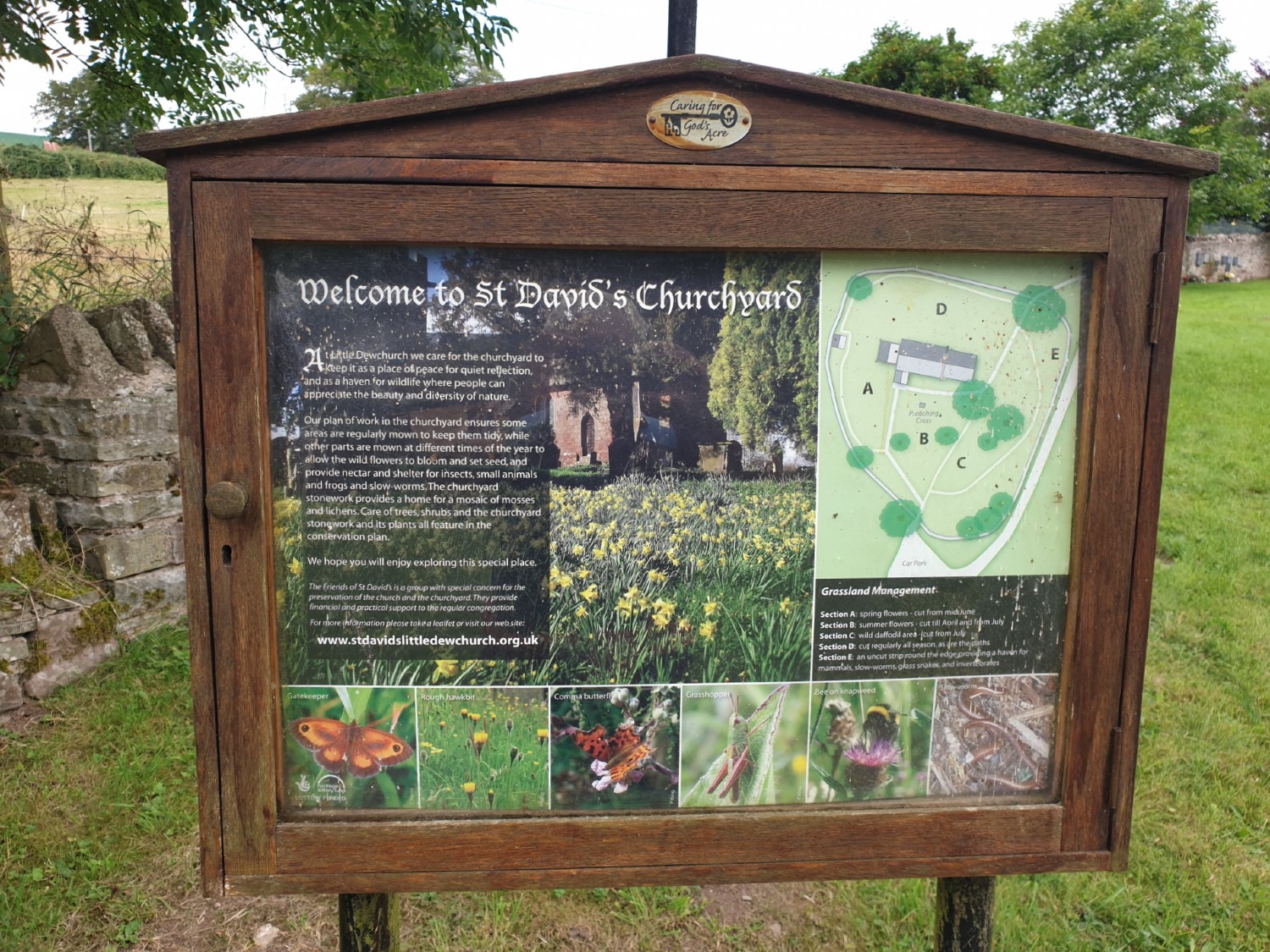
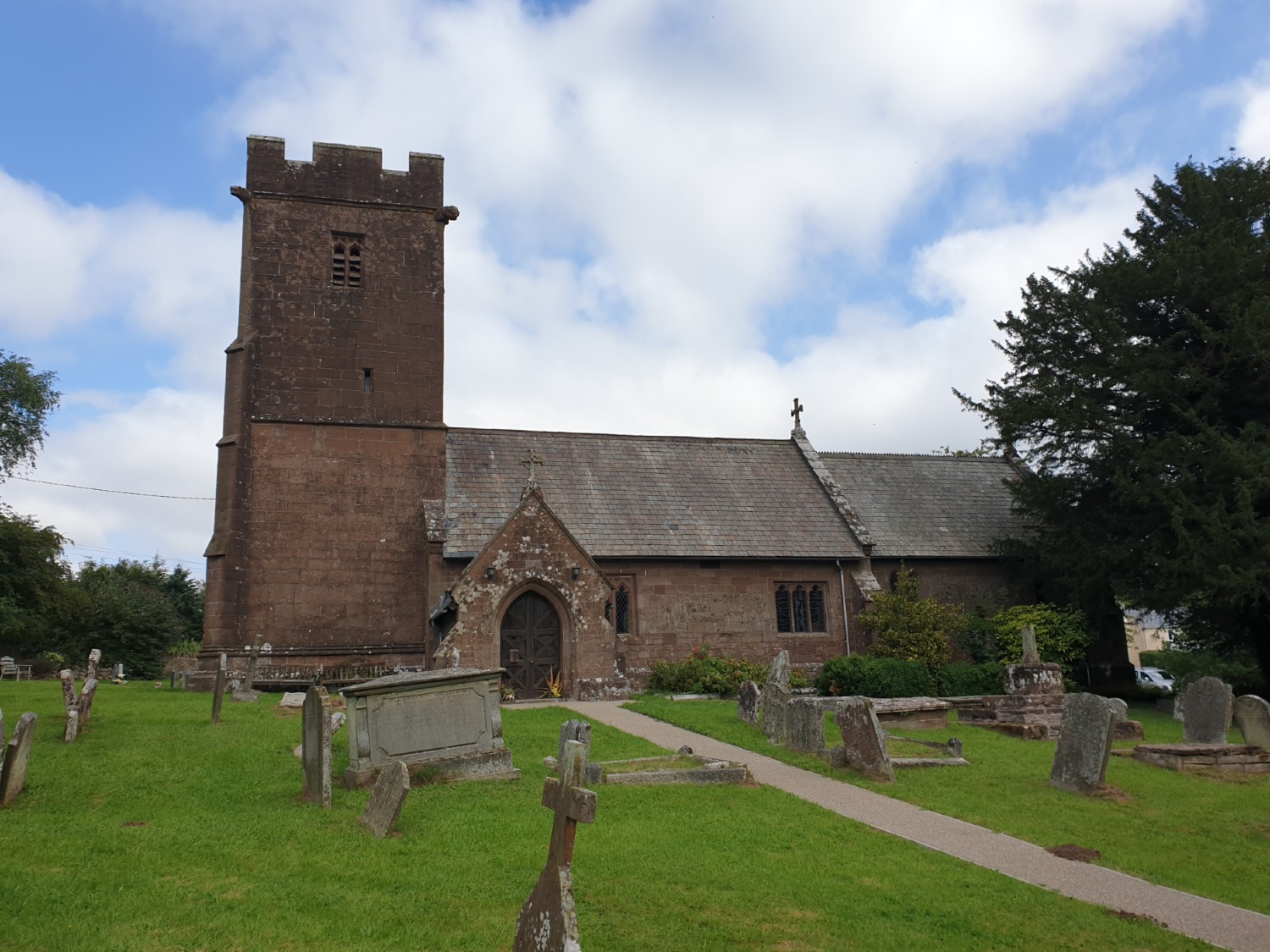
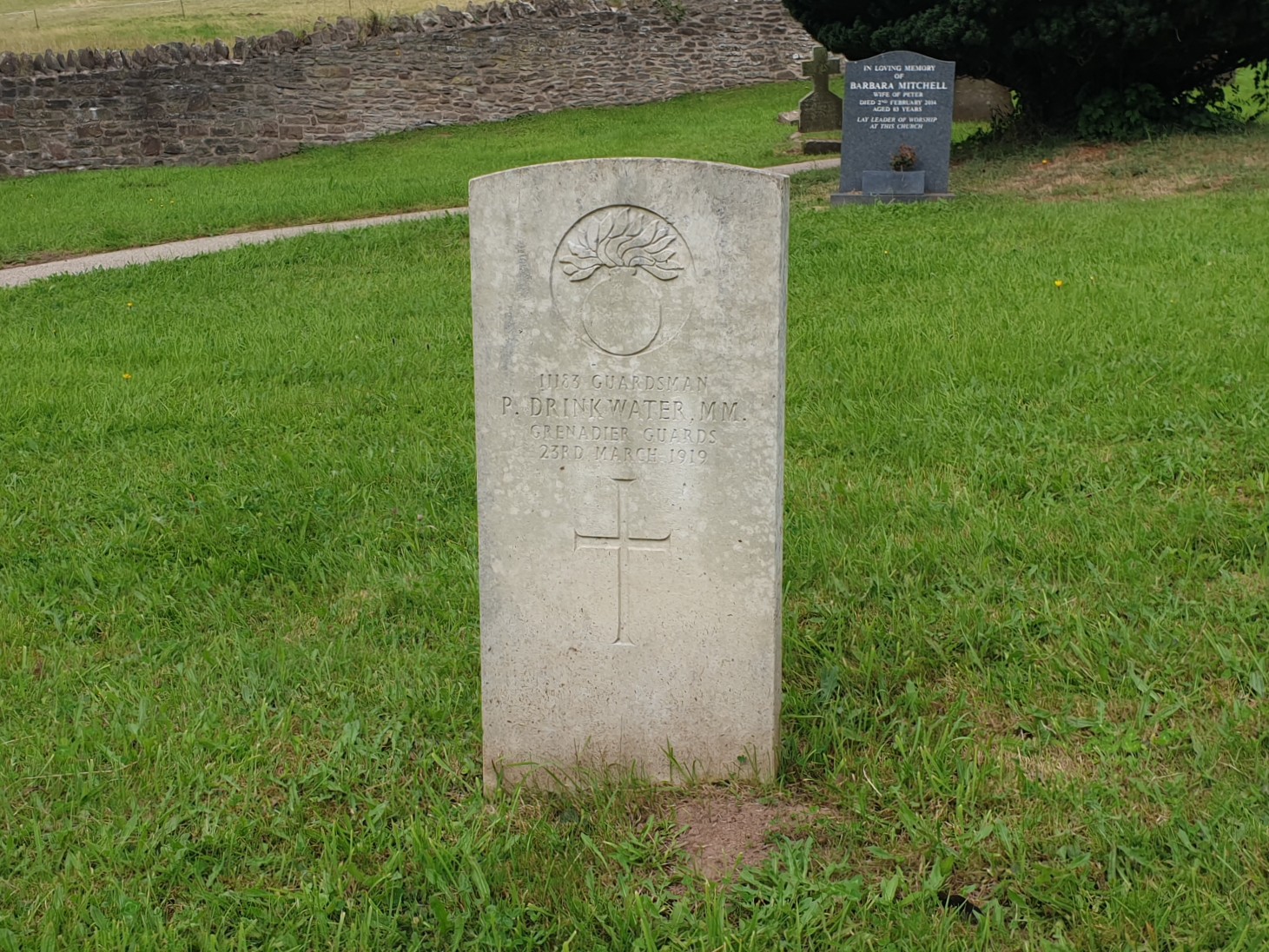
St David's Parish Church,
Little Dewchurch....Map
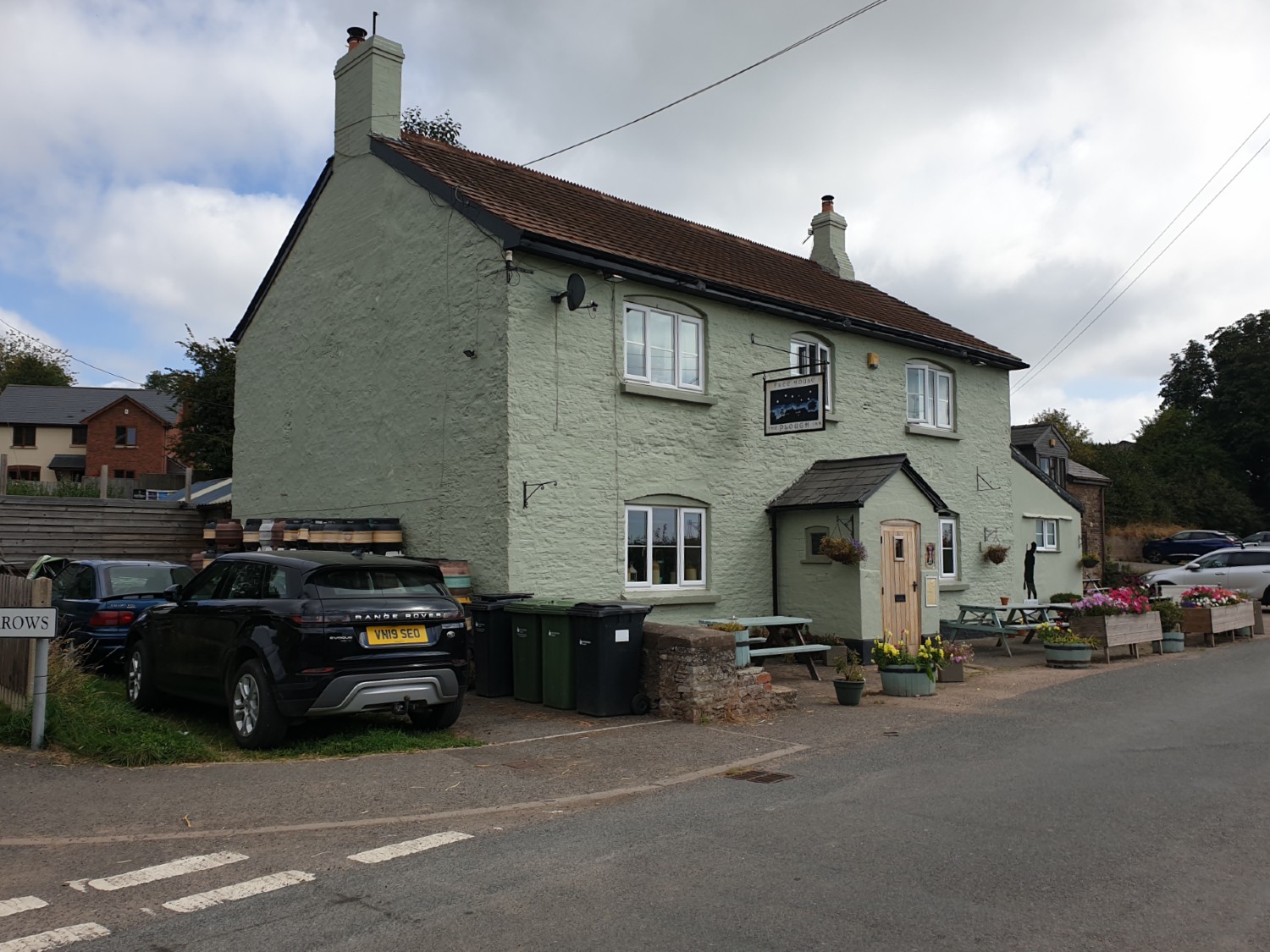
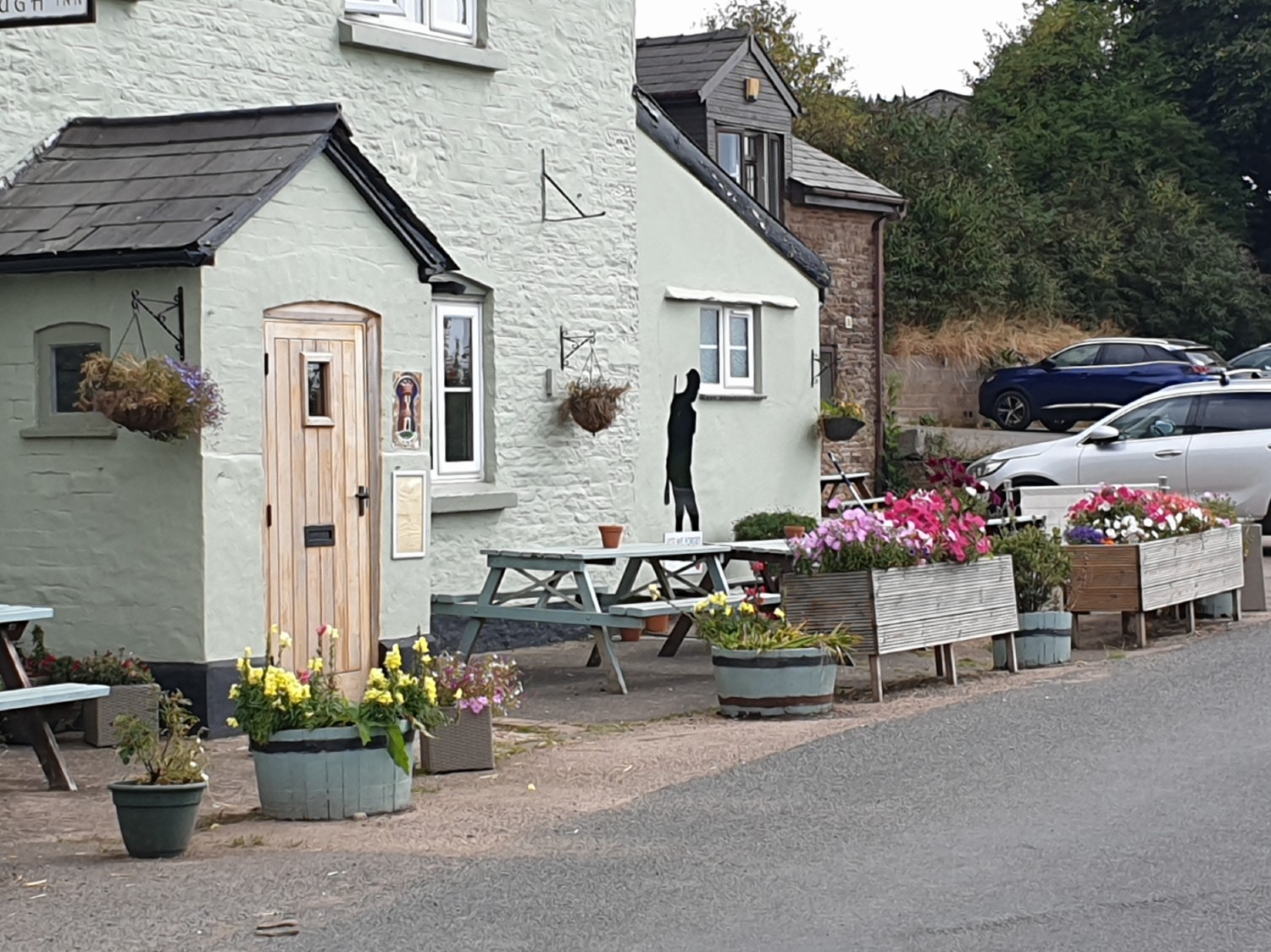
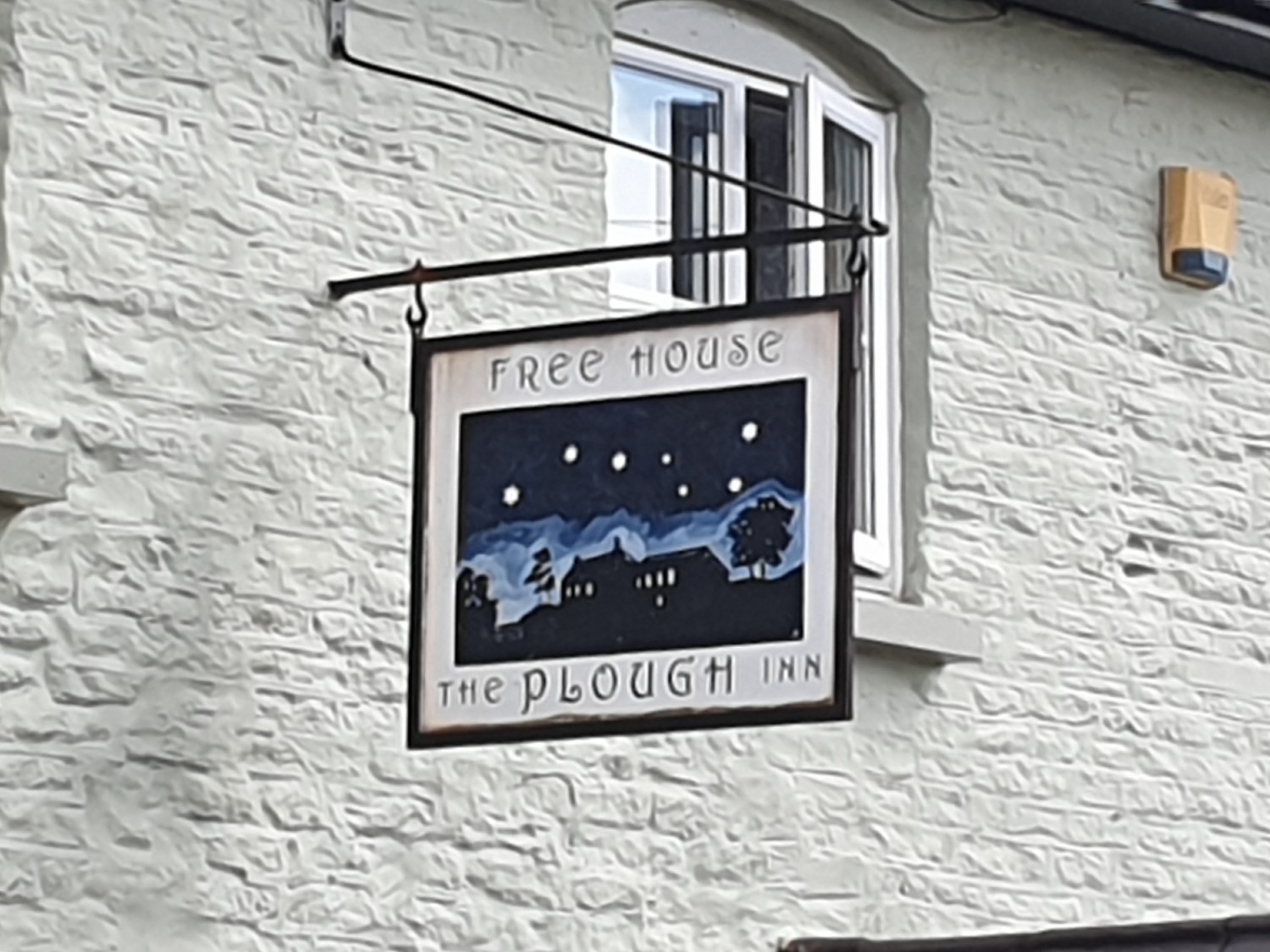
The Plough Inn, Little Dewchurch....Map
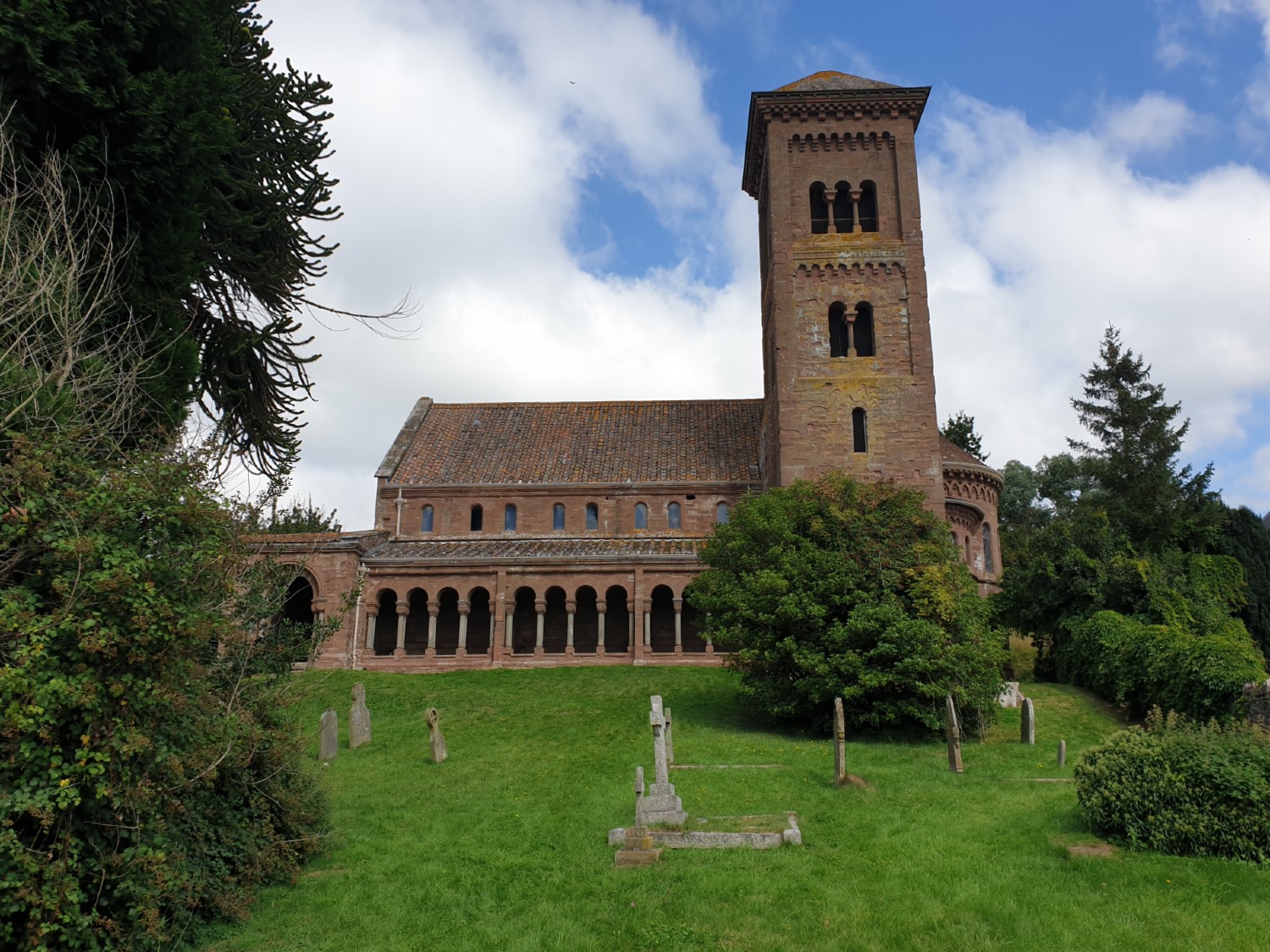
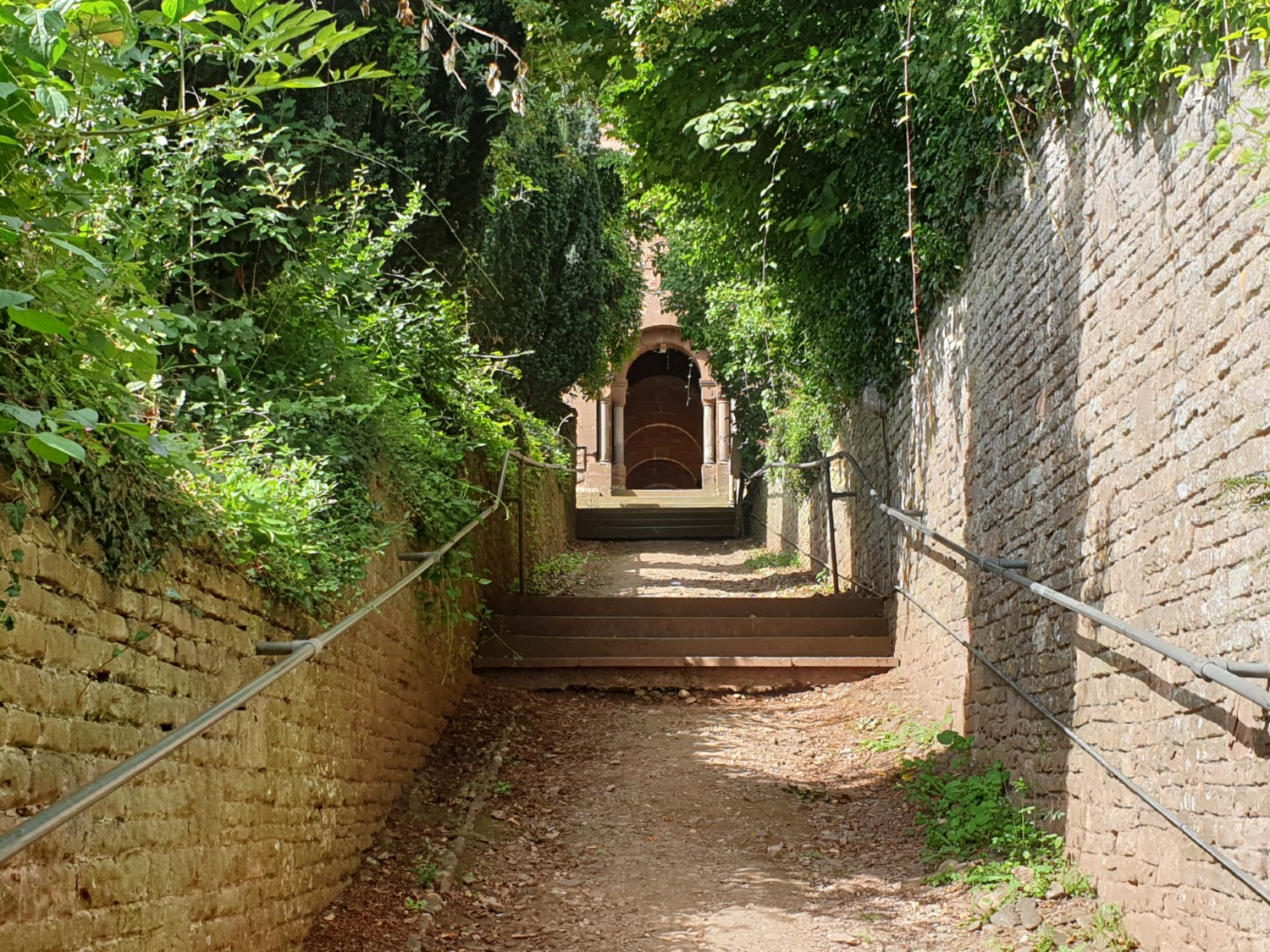
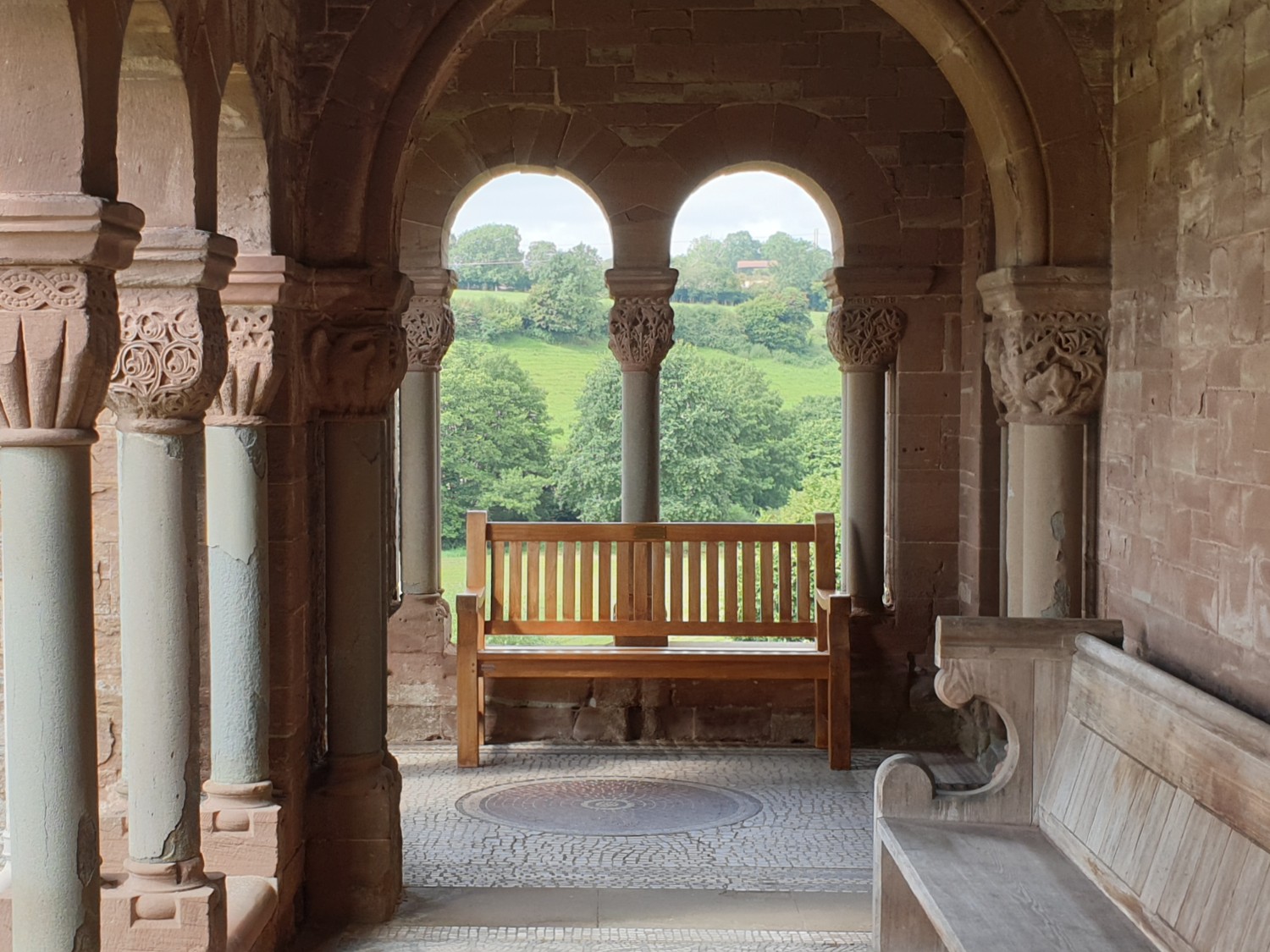
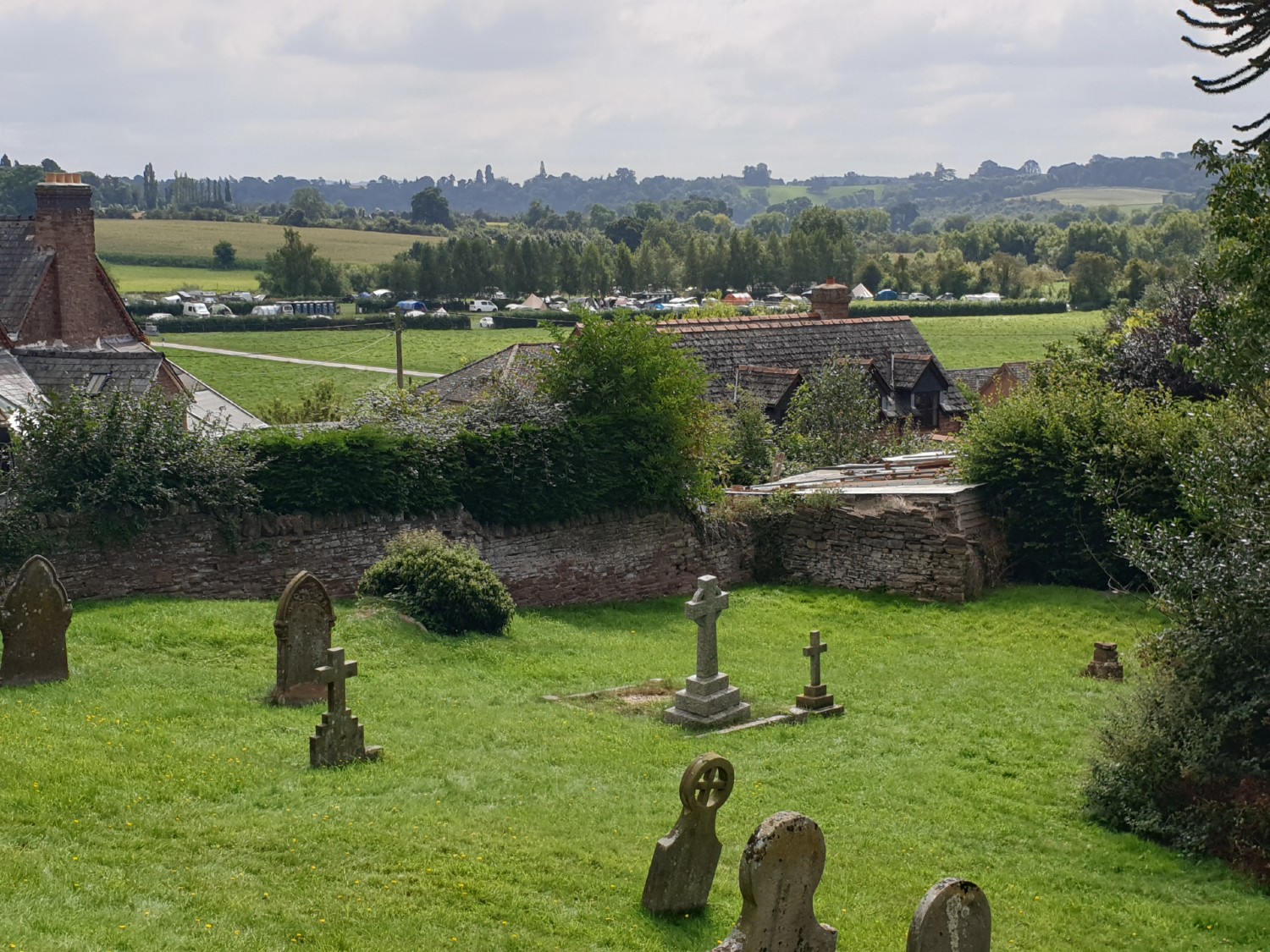
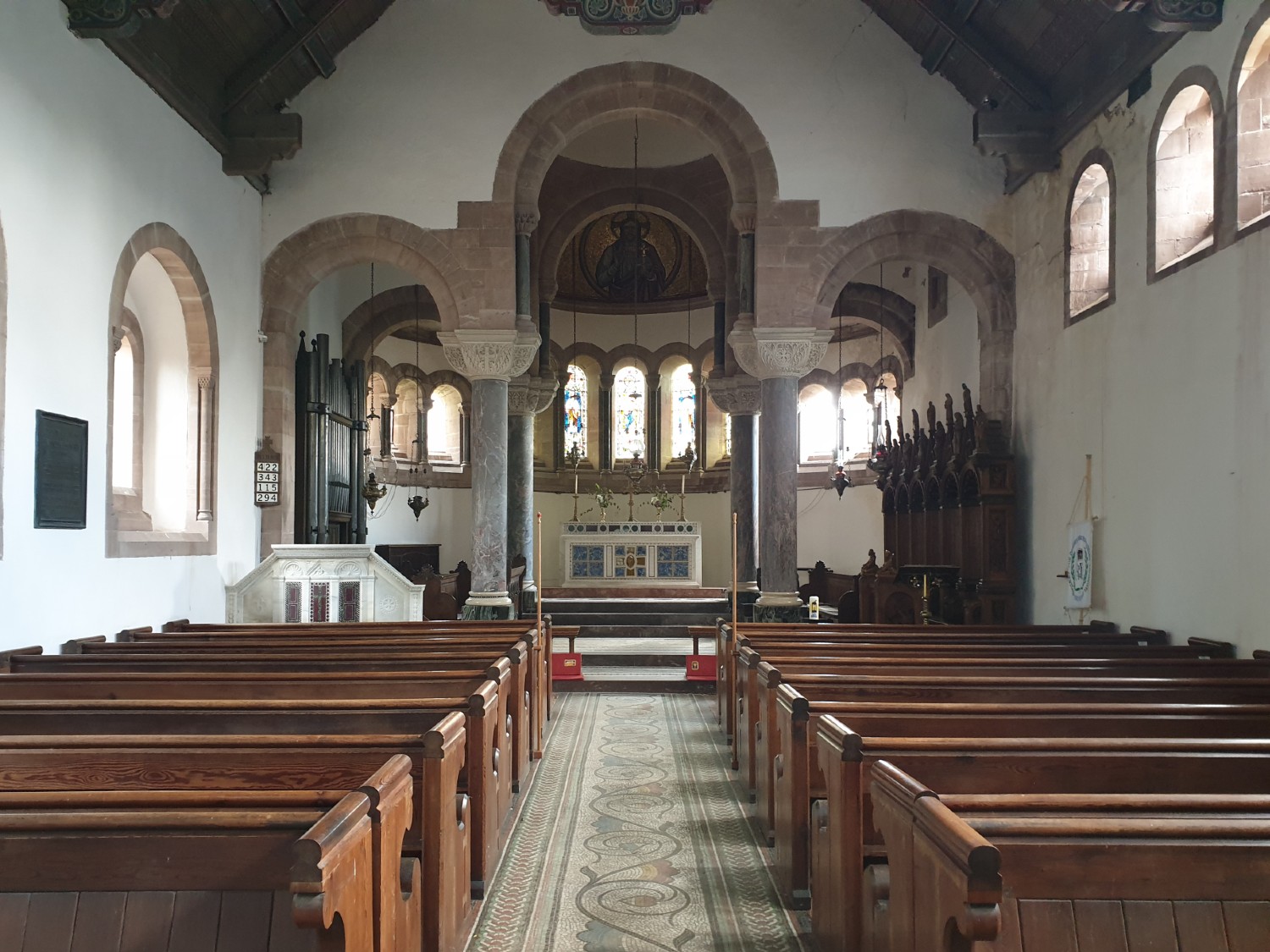
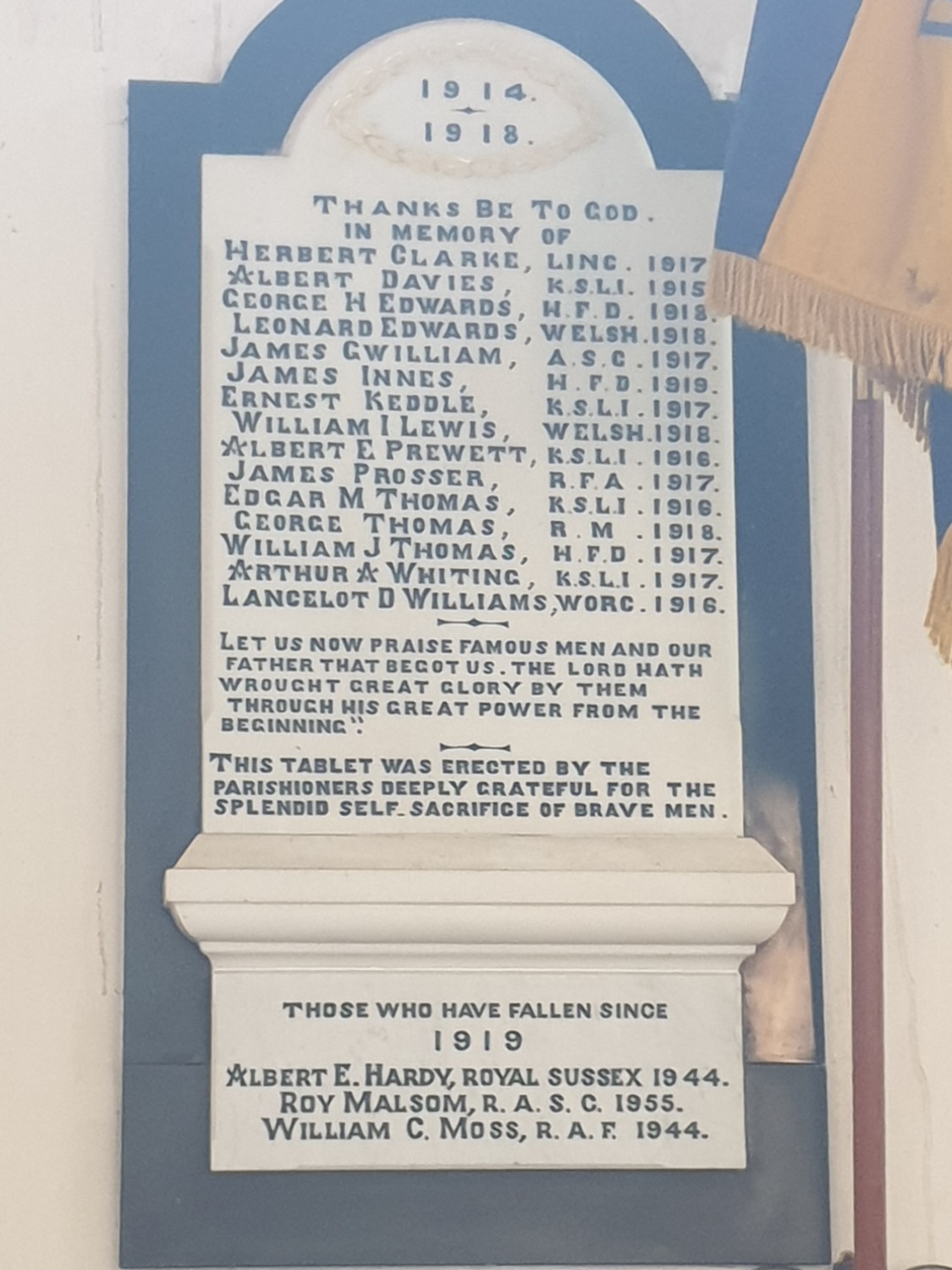
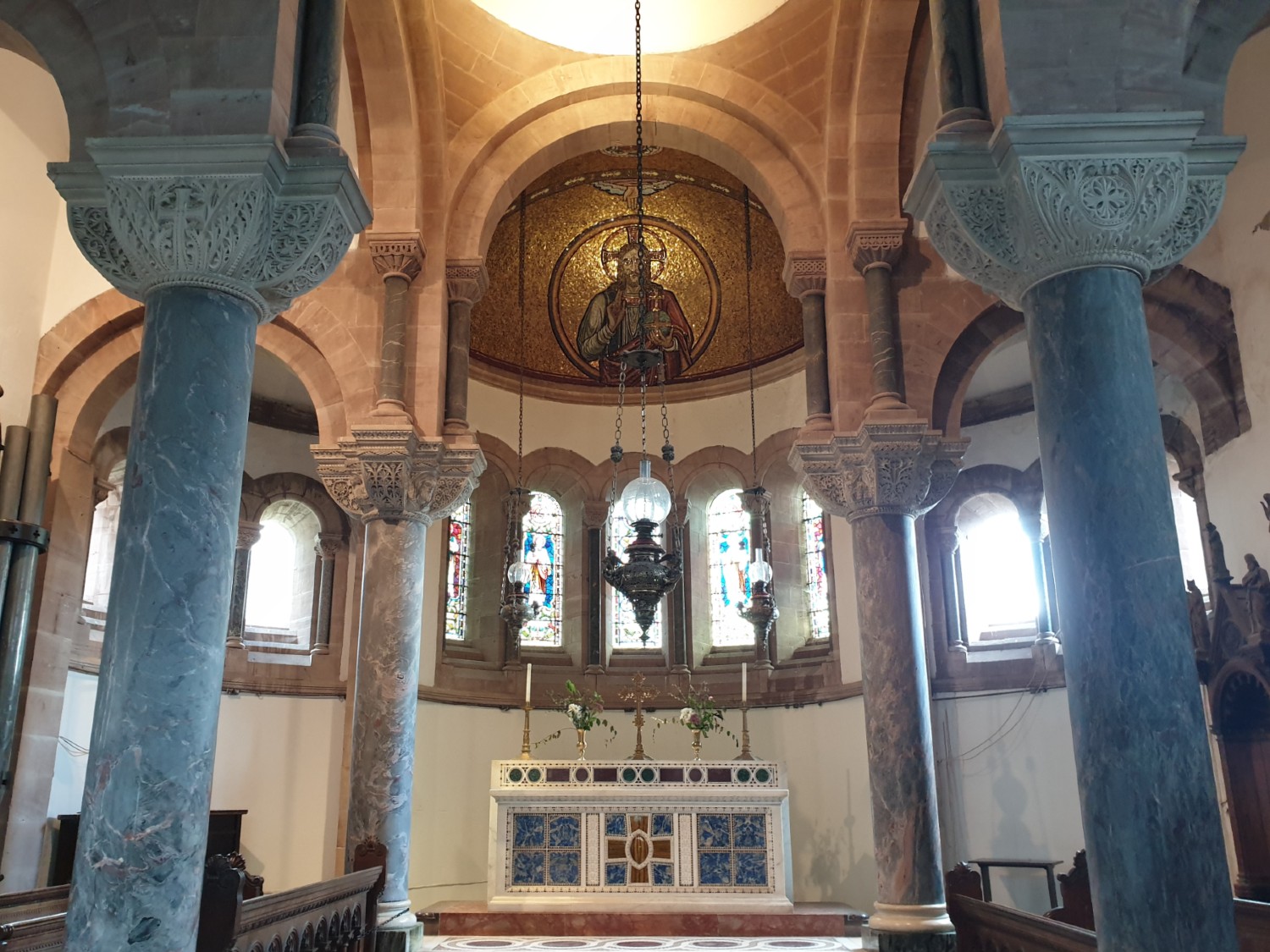
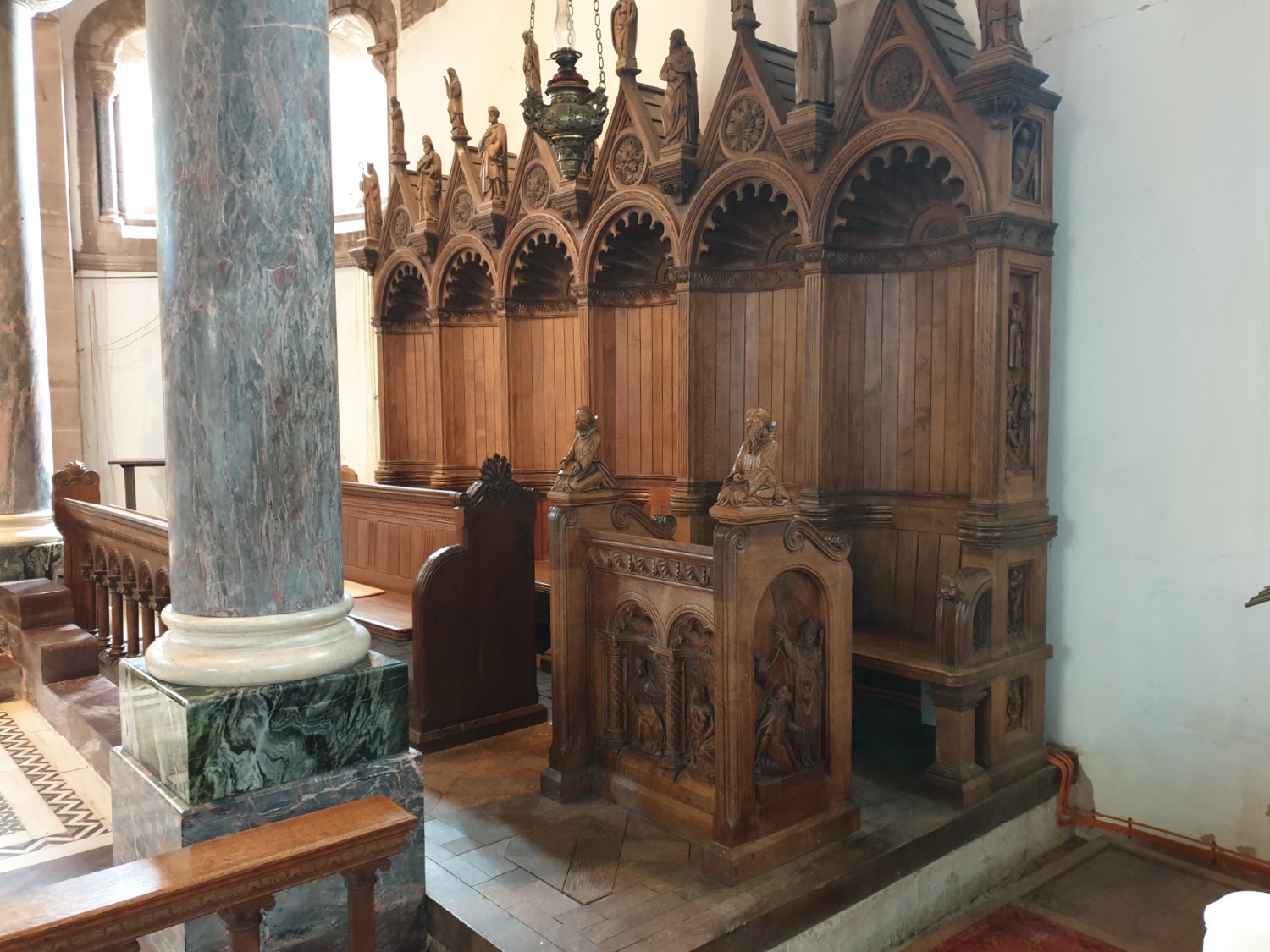
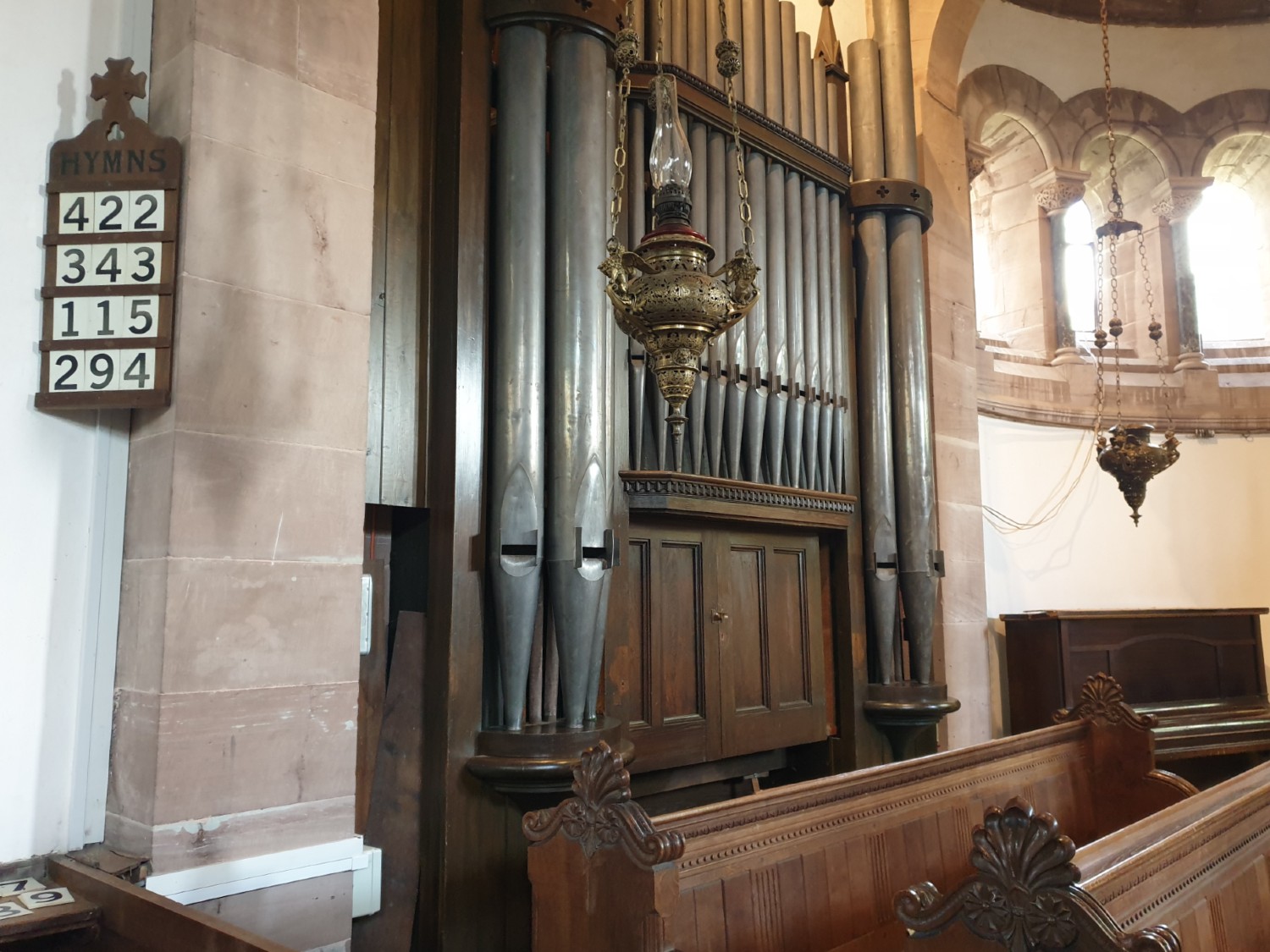
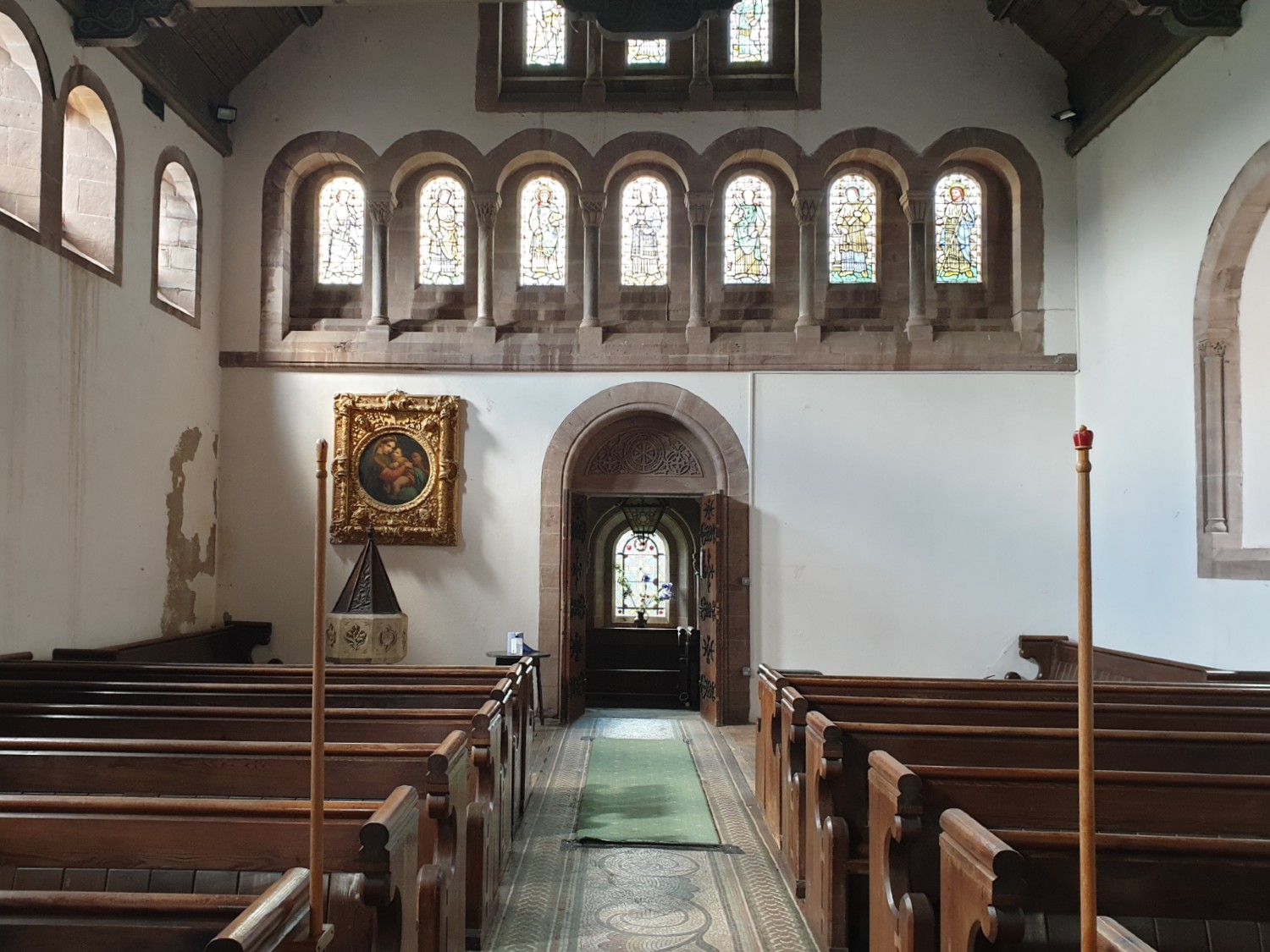
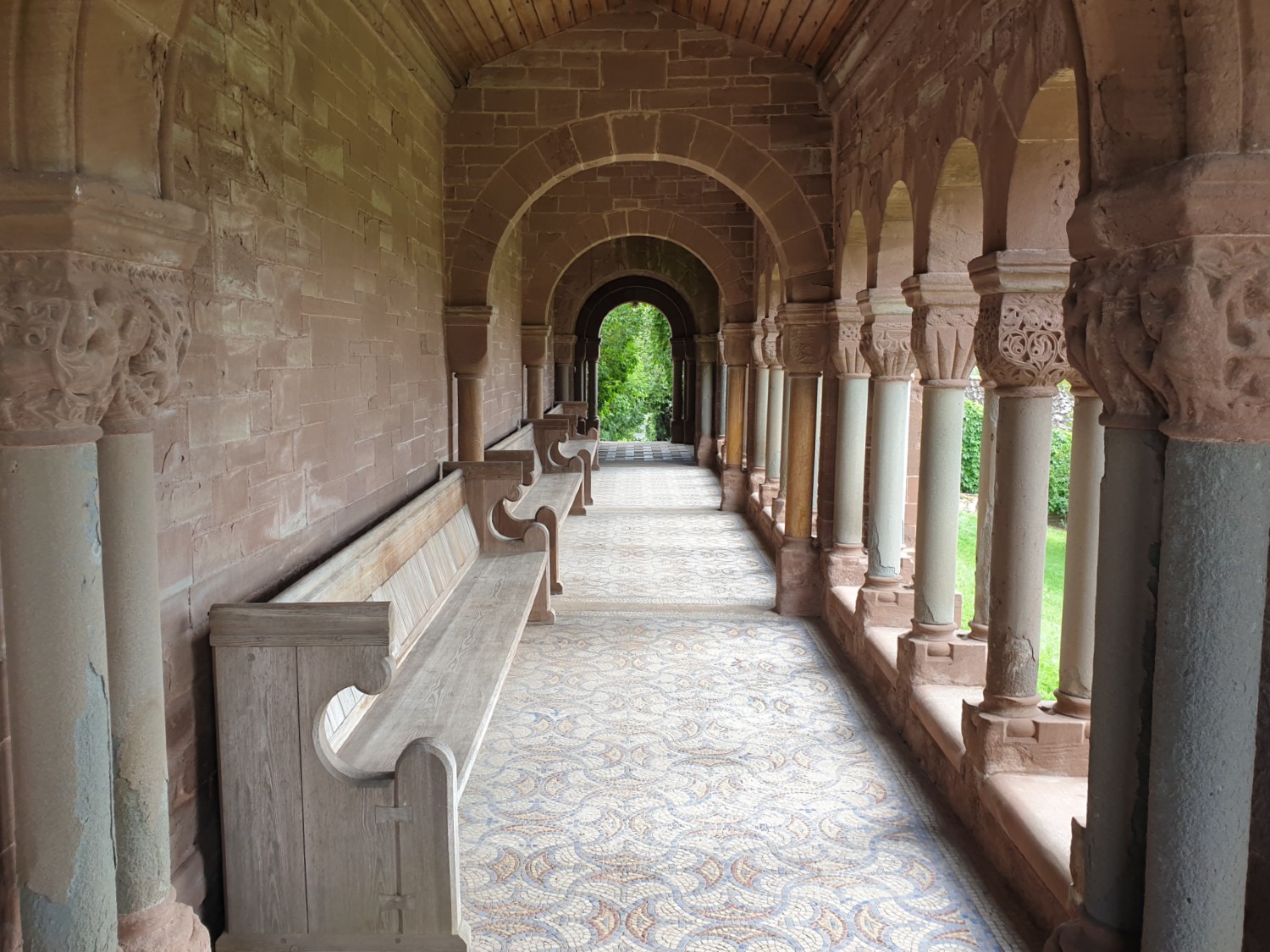
St Catherine's Church, Hoarwithy....Map
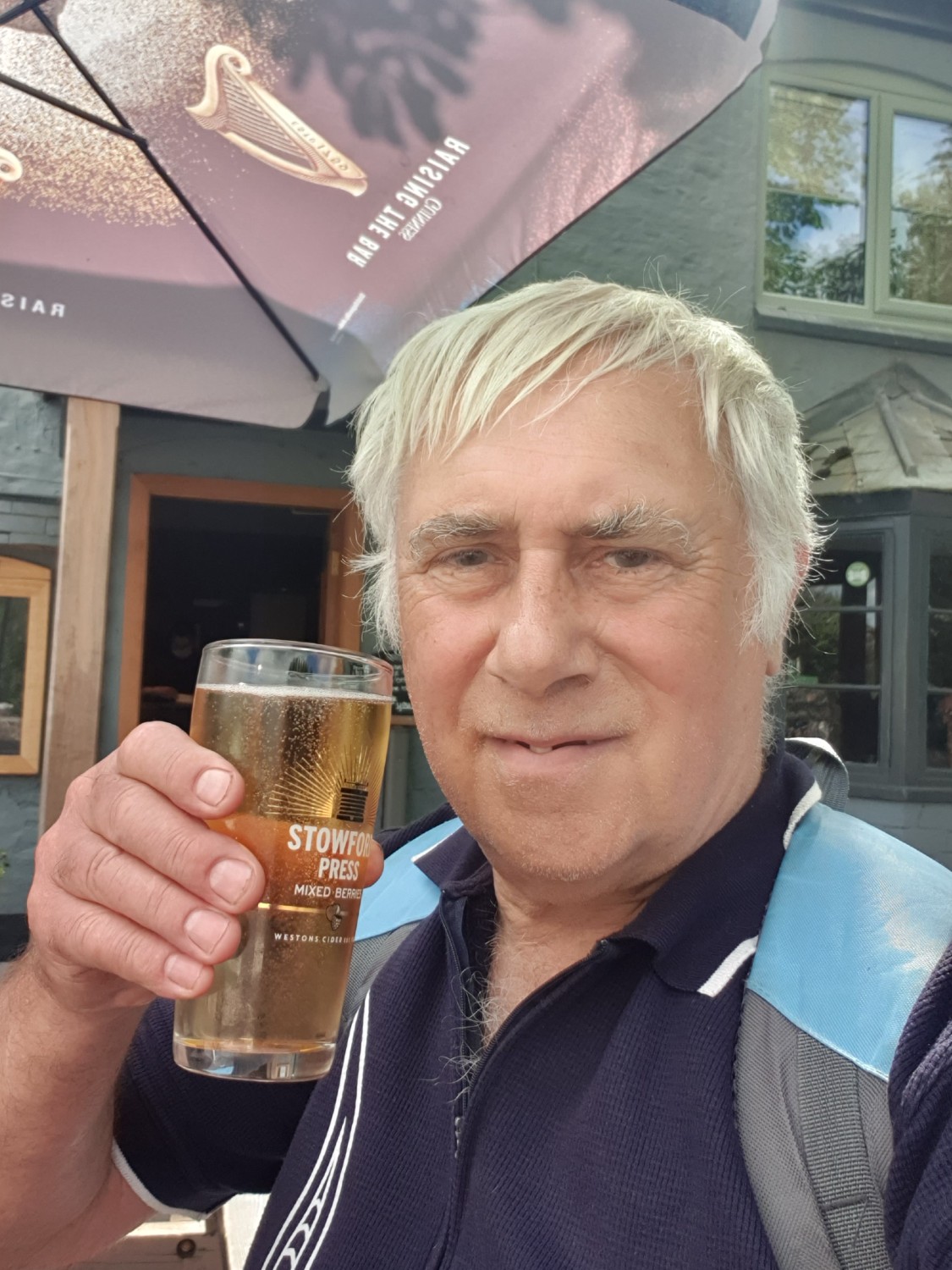
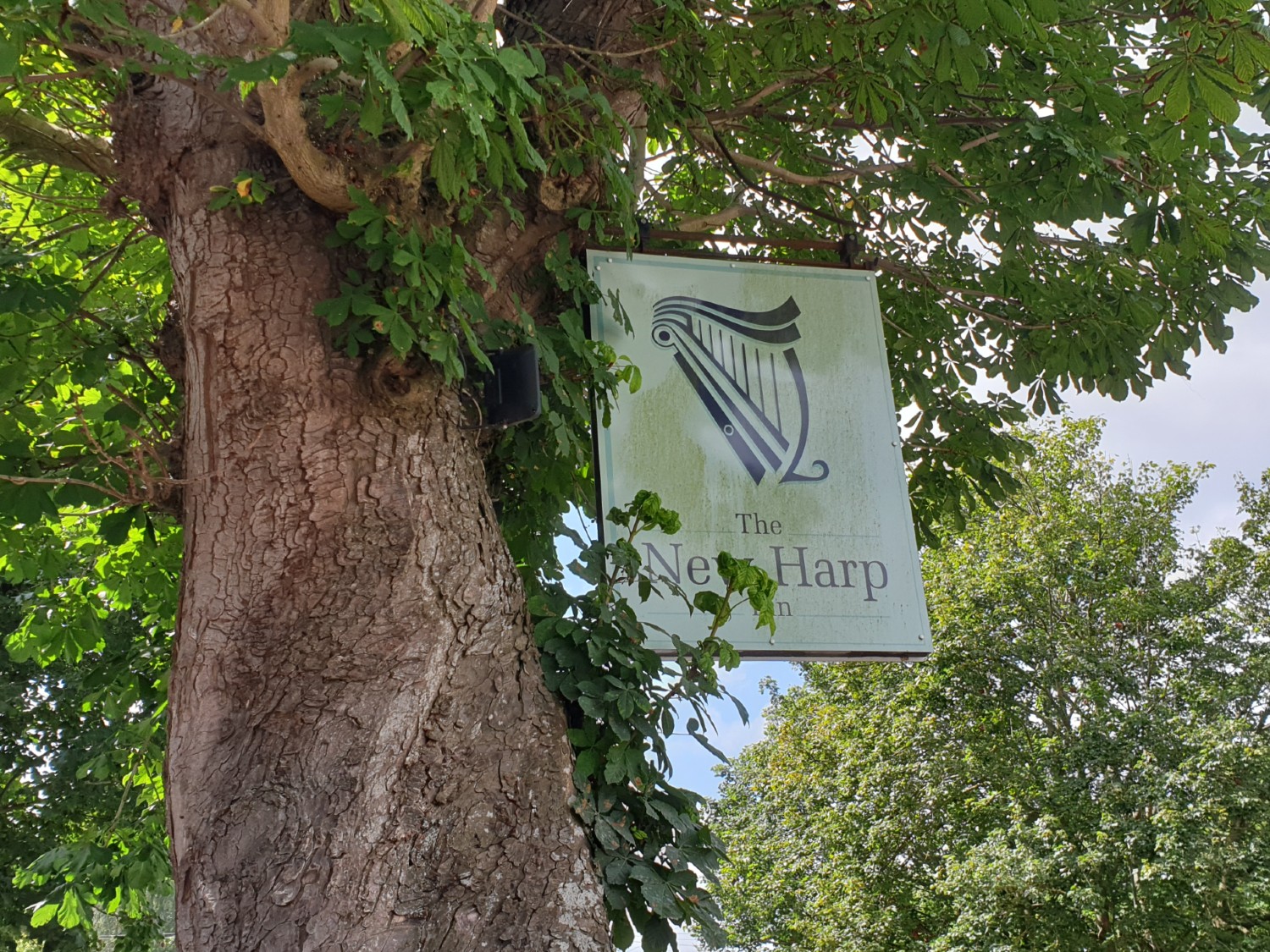
At the New Harp, Hoarwithy....Map
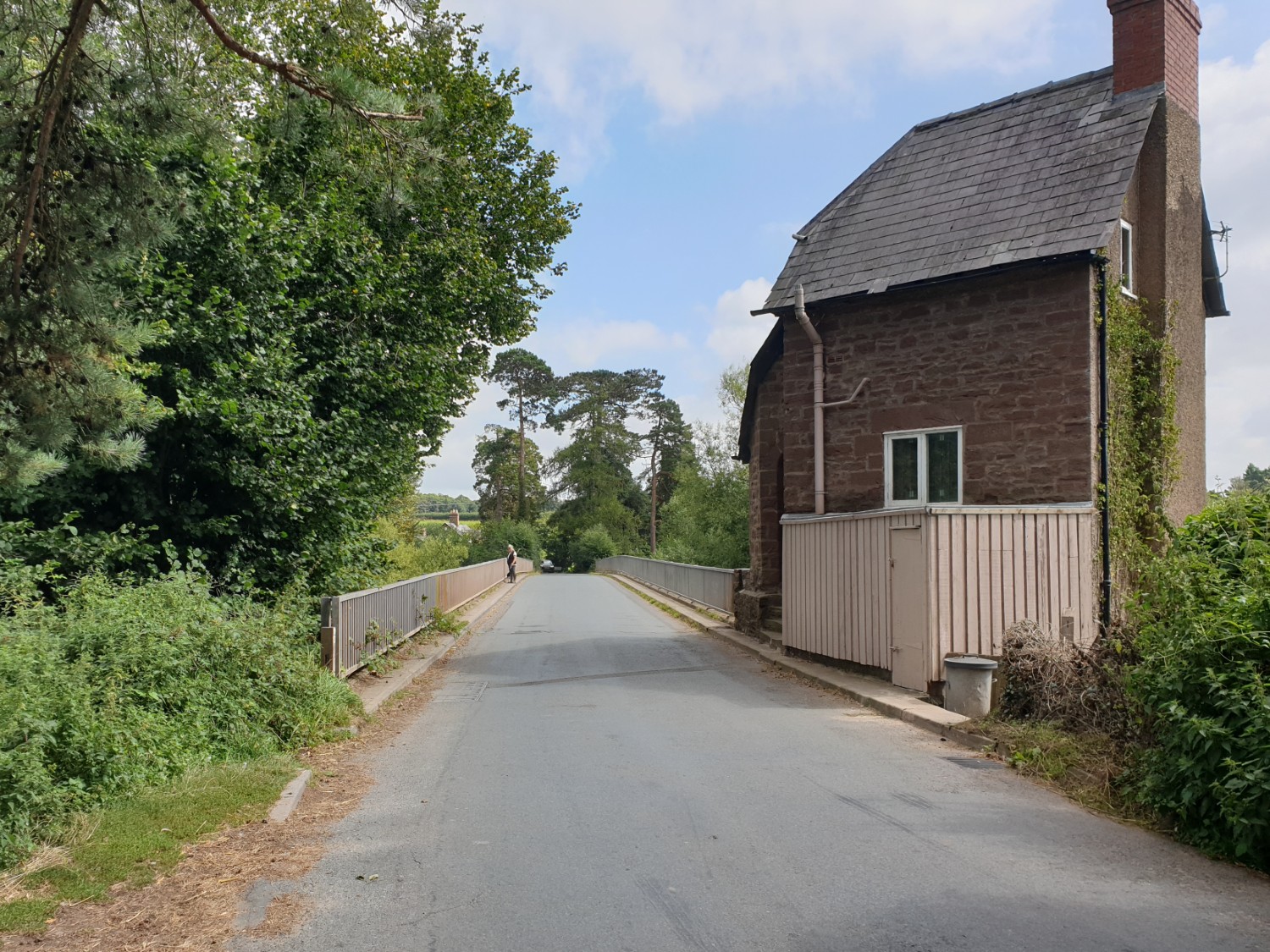
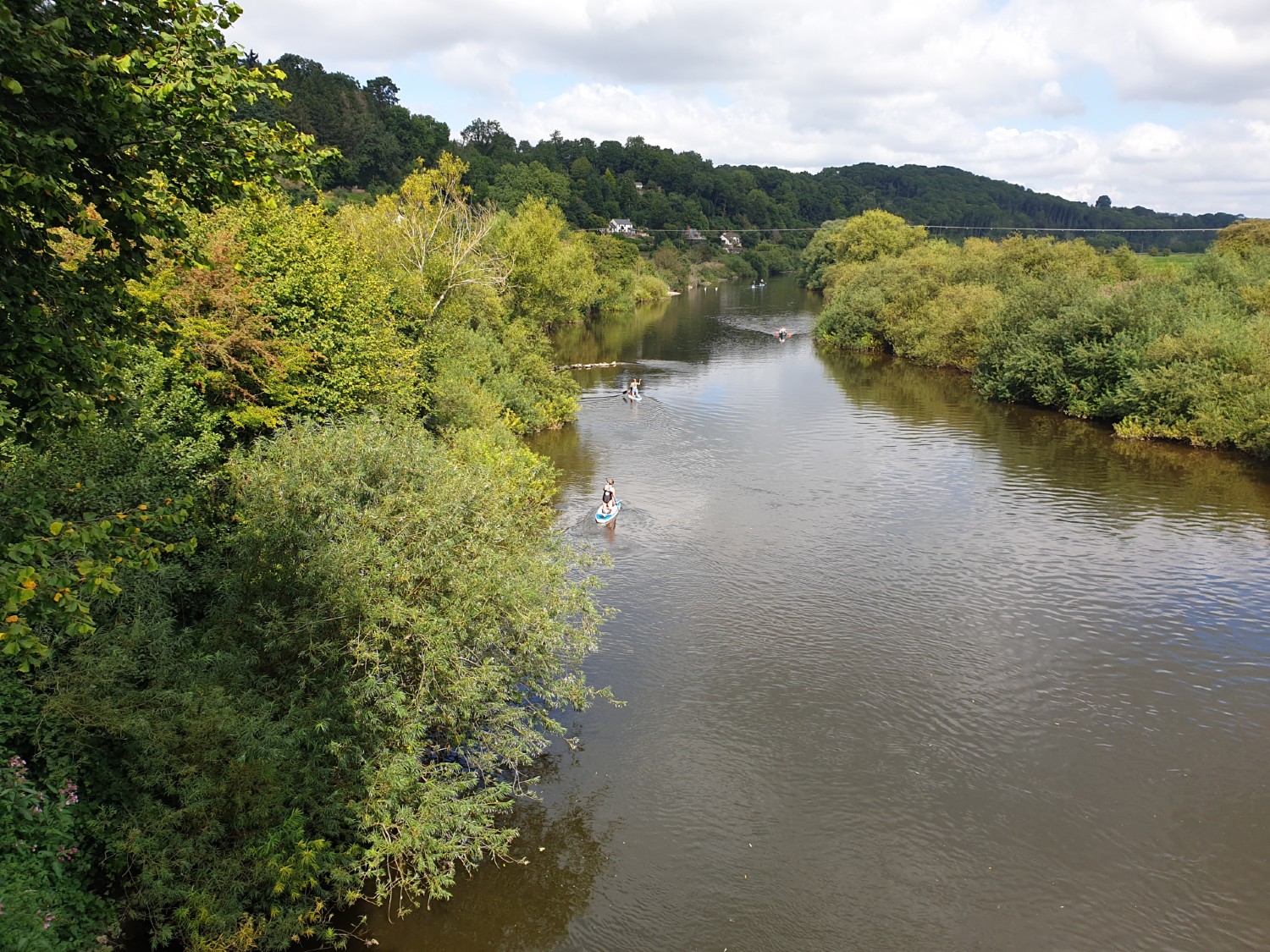
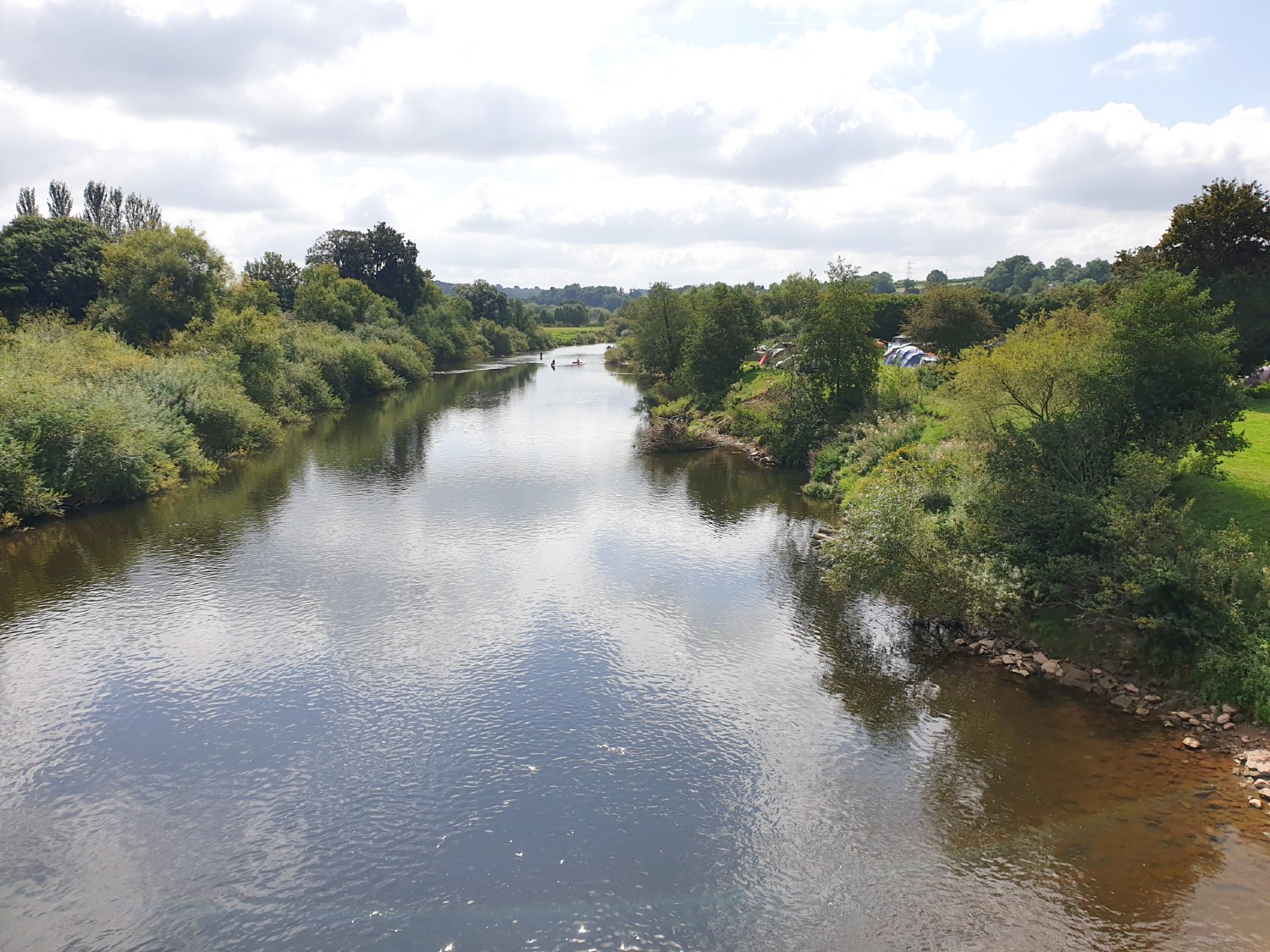
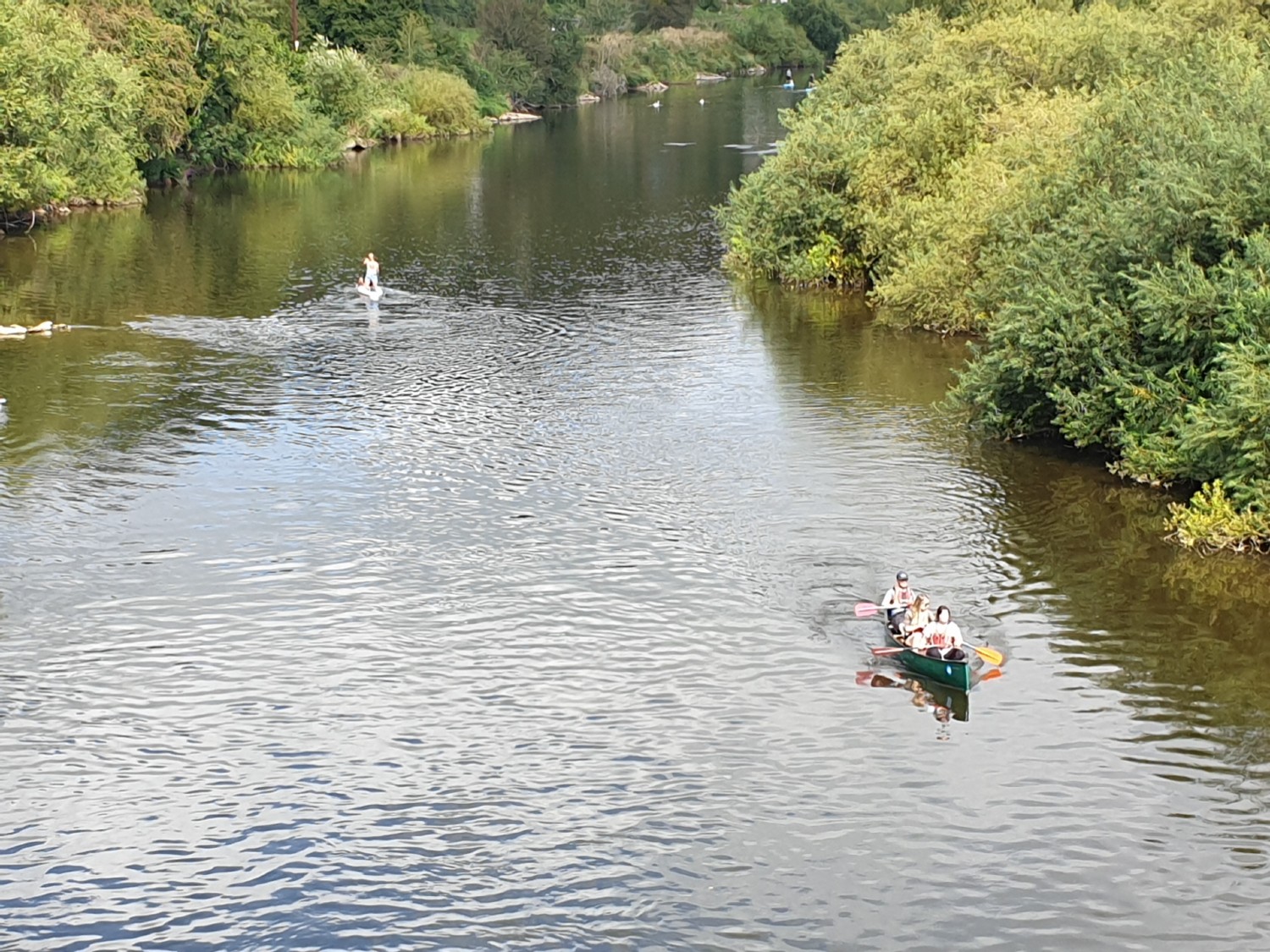
View of Hoarwithy Bridge and Canoe Centre on the River Wye....Map
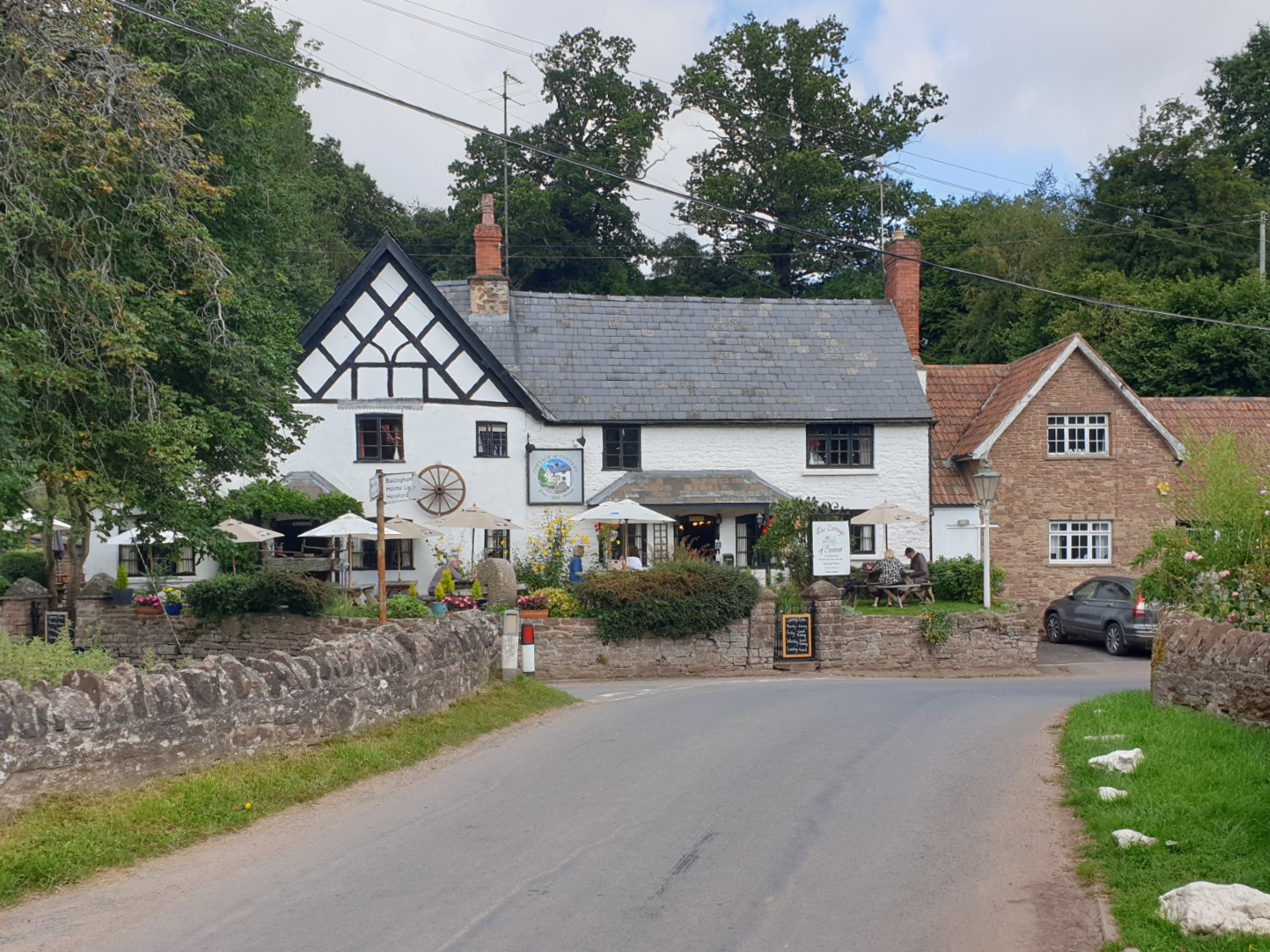
The Cottage of Content, Carey....Map
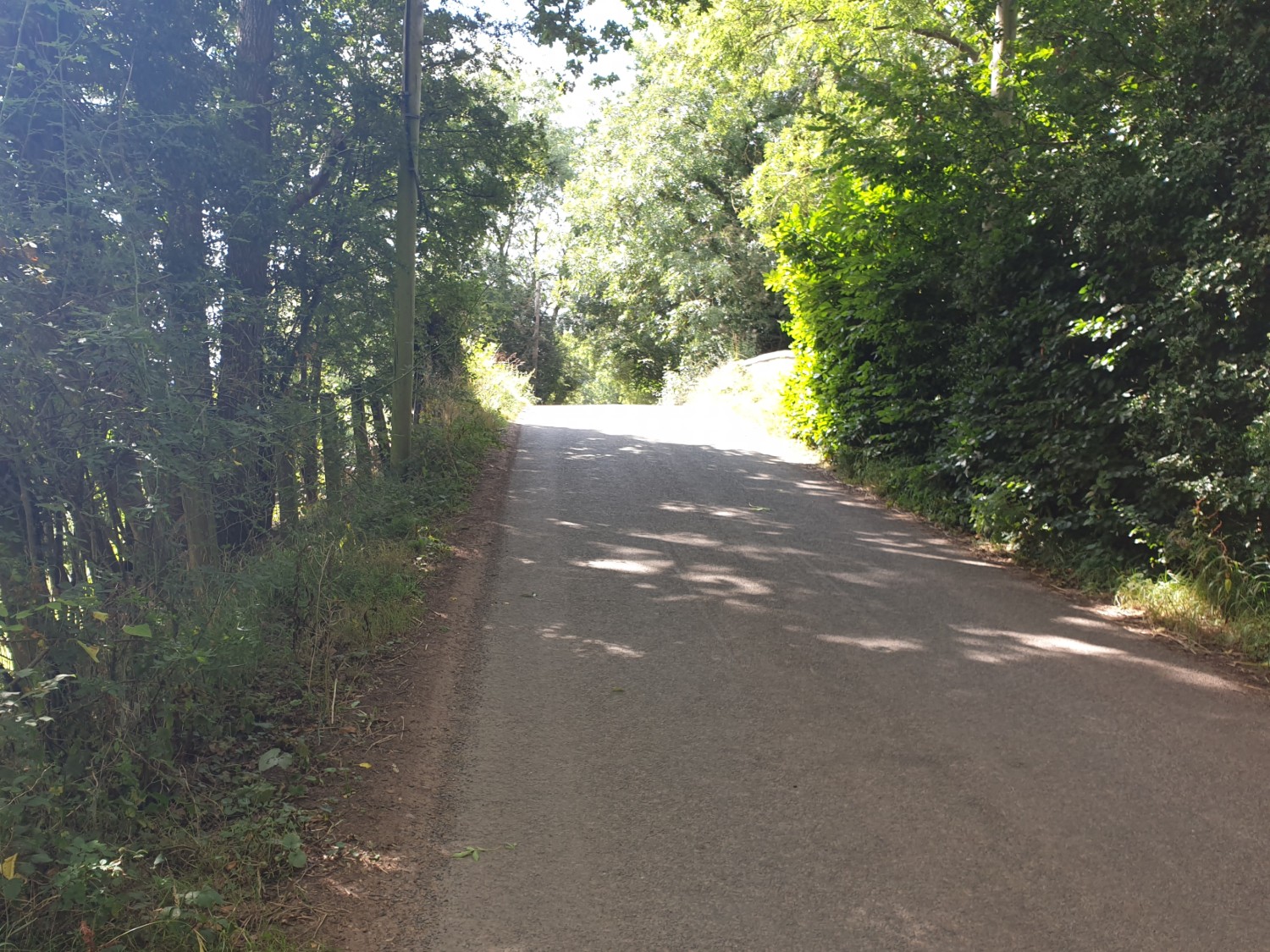
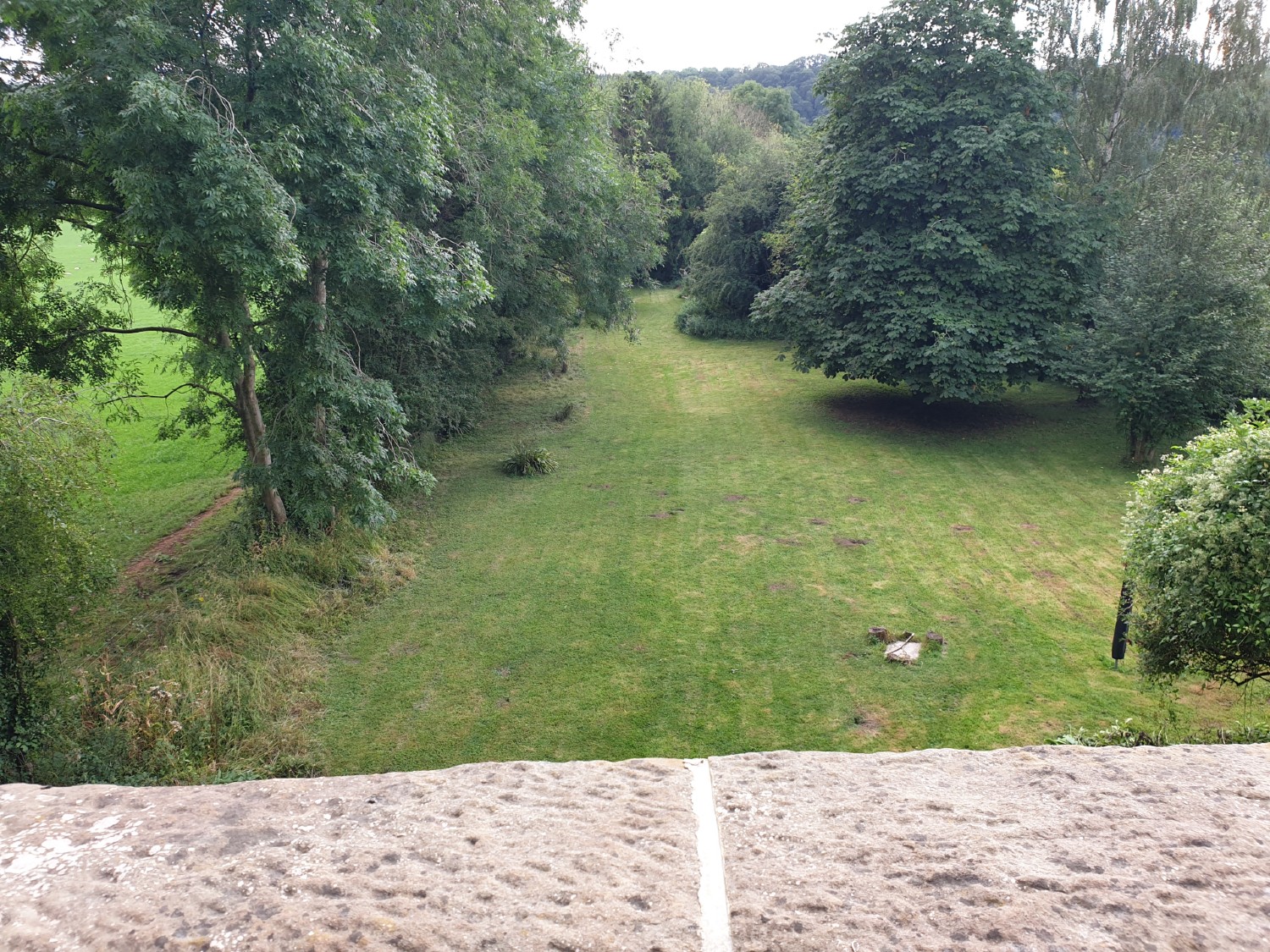
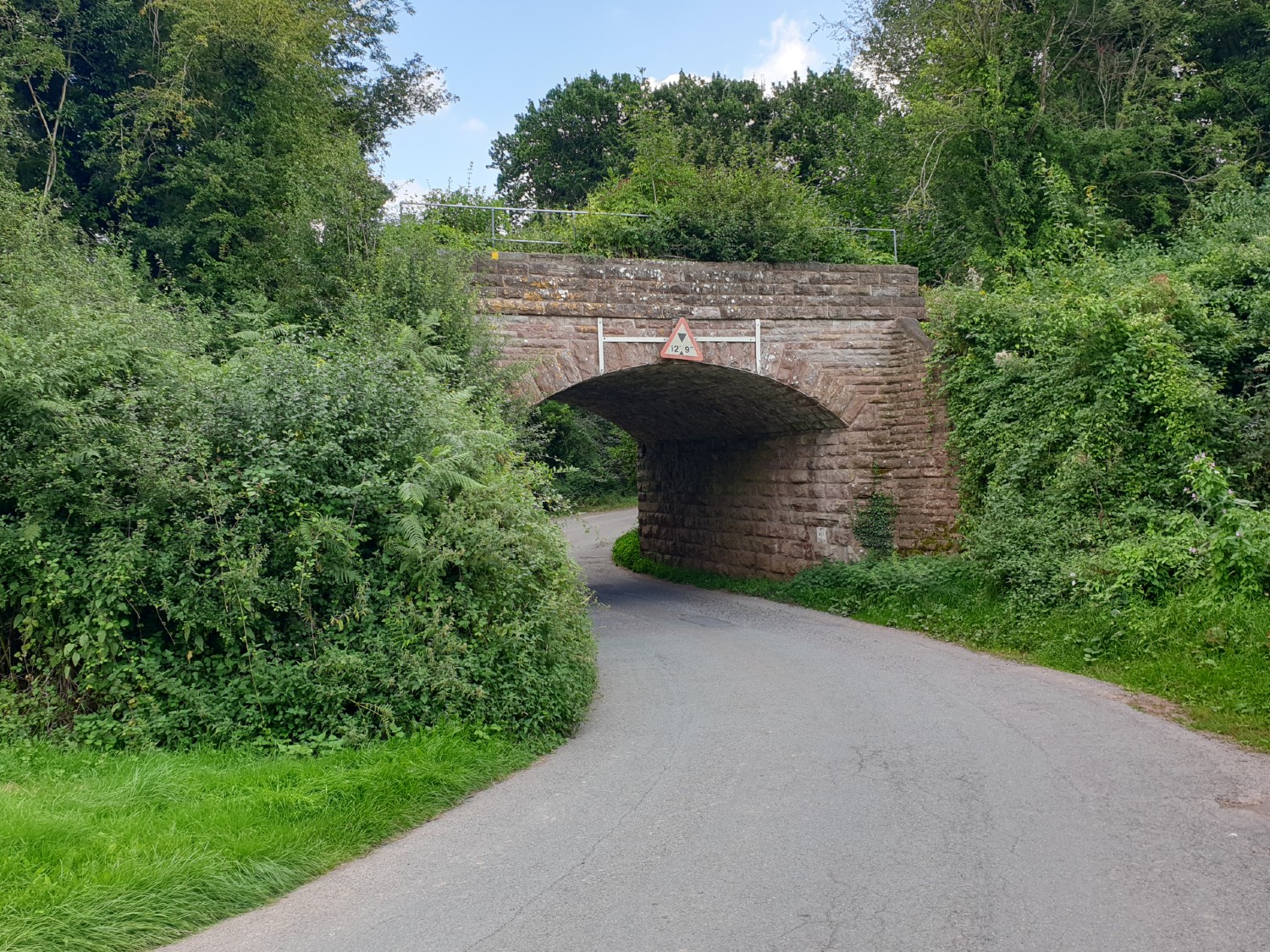
An idea of the undulating terrain can be seen in these photos. Near Ballingham the bed of the former Hereford, Ross and Gloucester Railway can be seen passing under the road while further around towards Holme Lacy it can be seen passing over it. The railway was closed to passenger traffic in 1964 and to freight a year later....Map
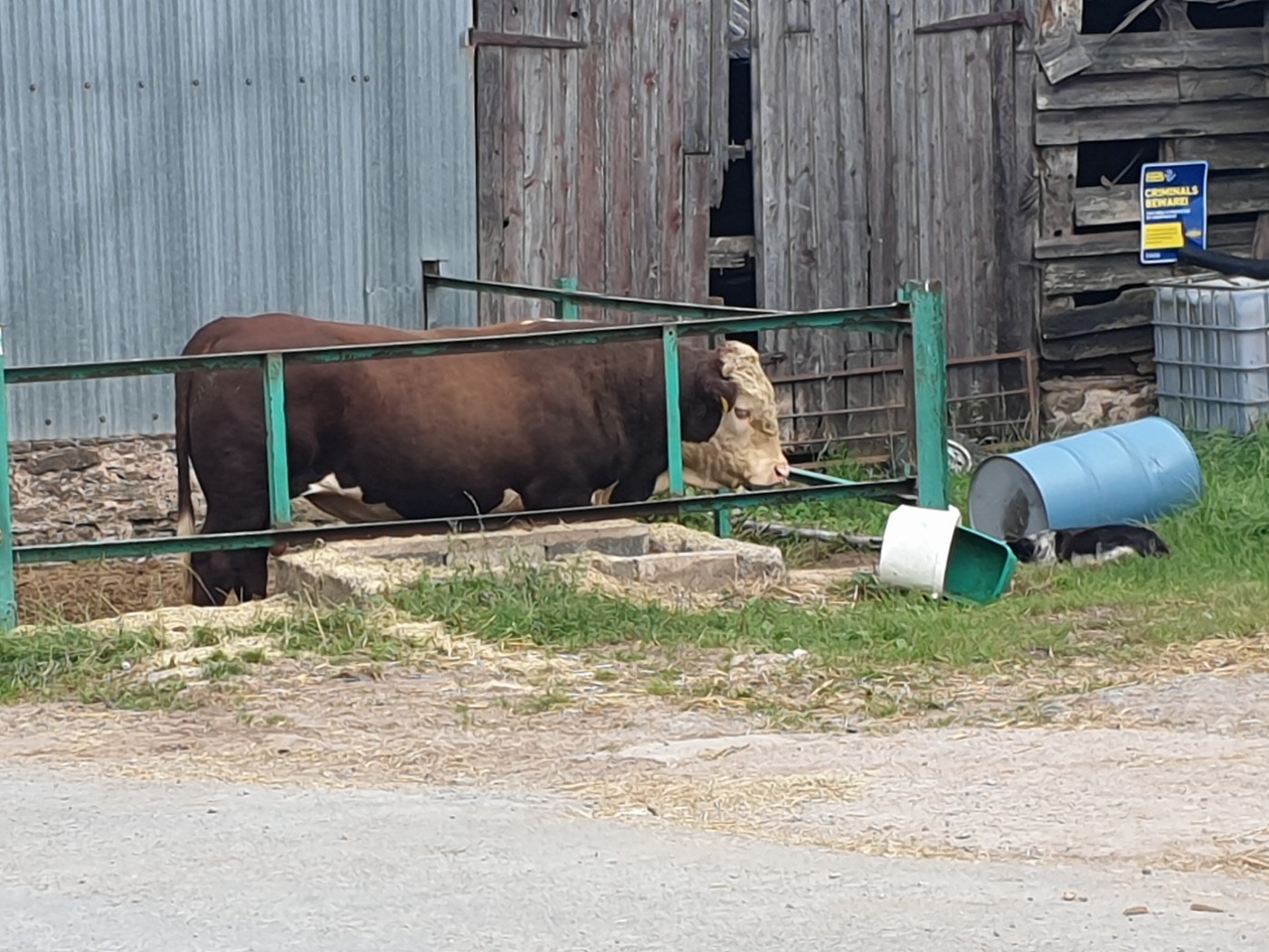
A Hereford Bull near Ballingham....Map
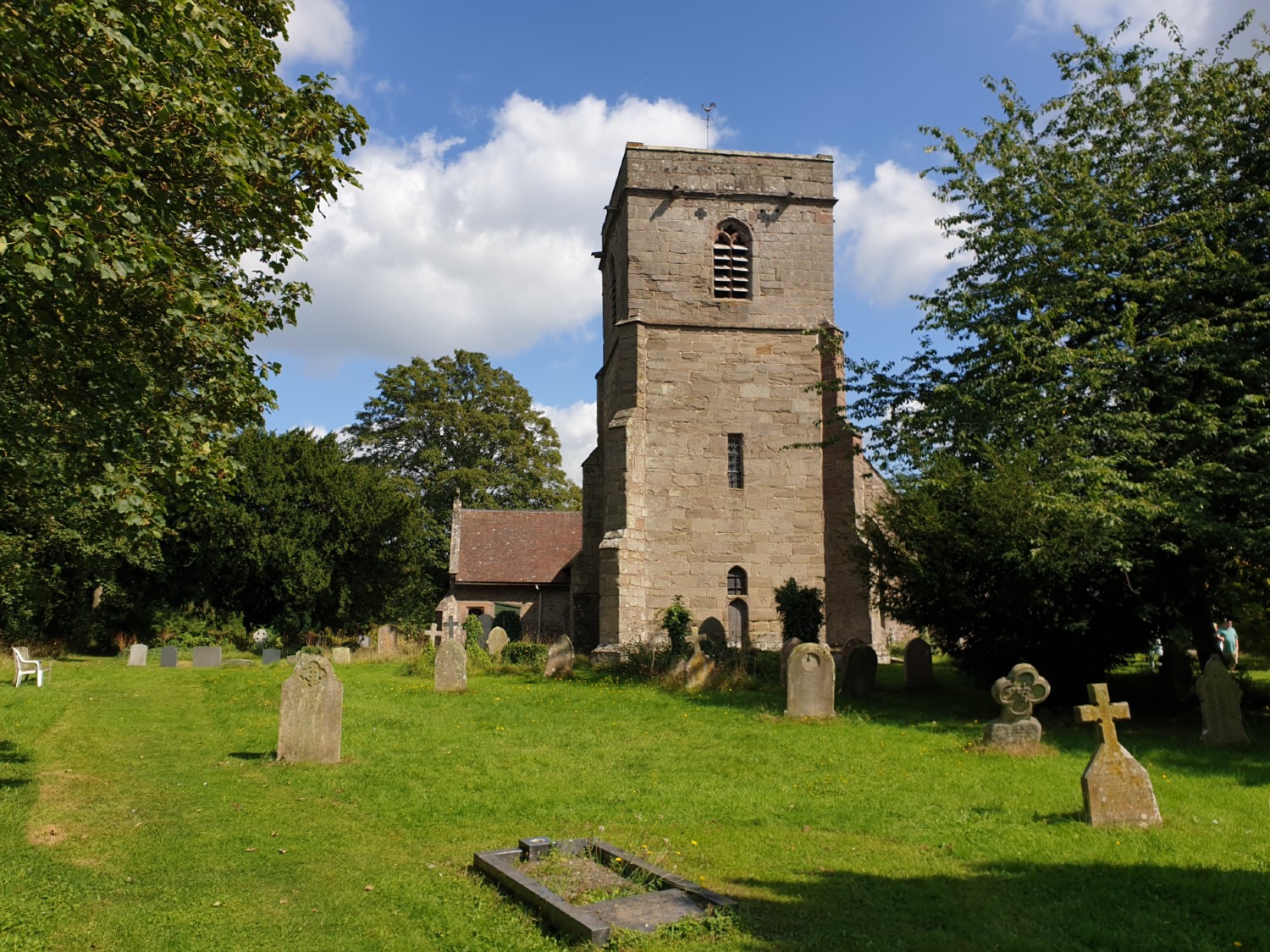
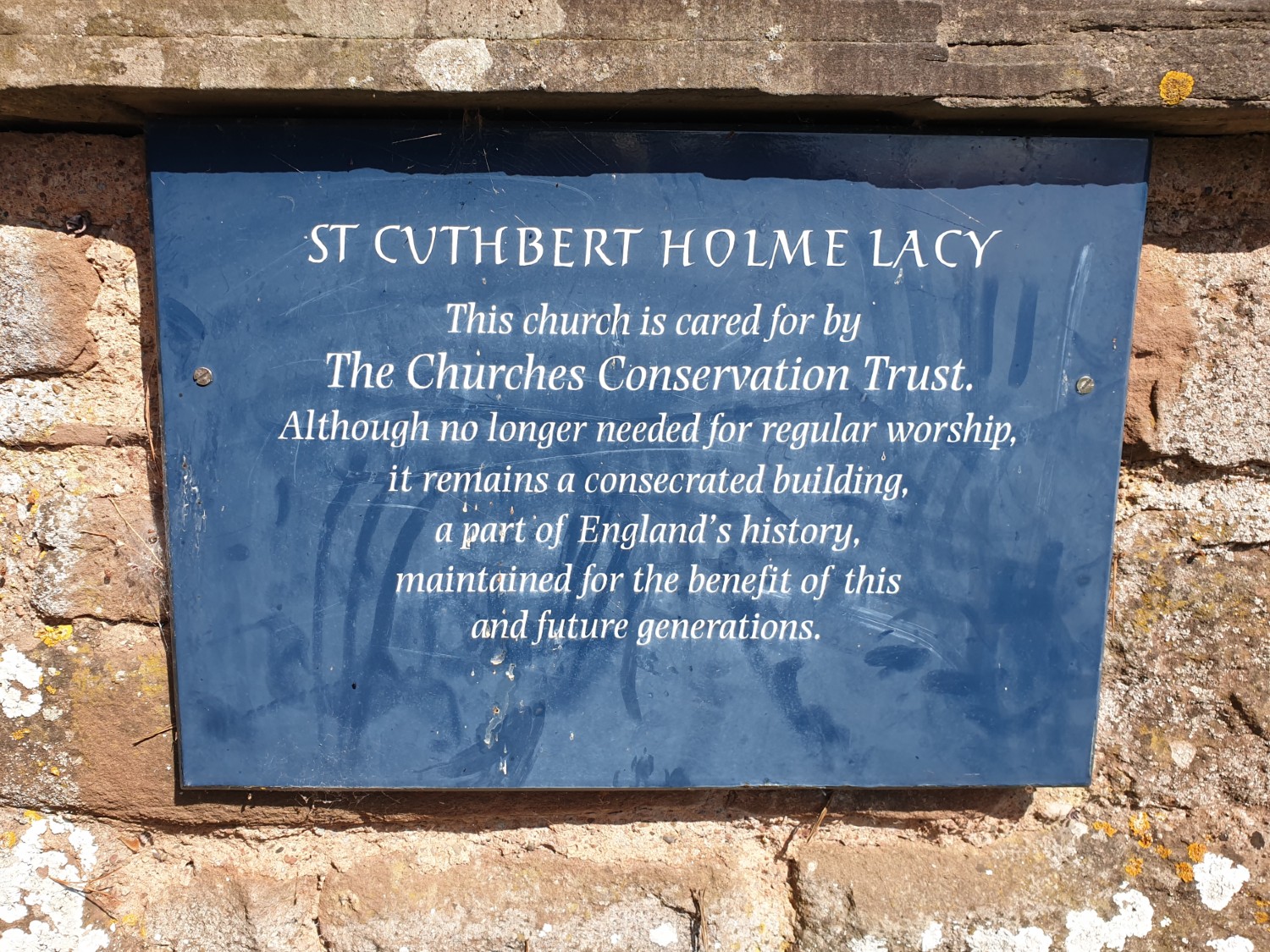
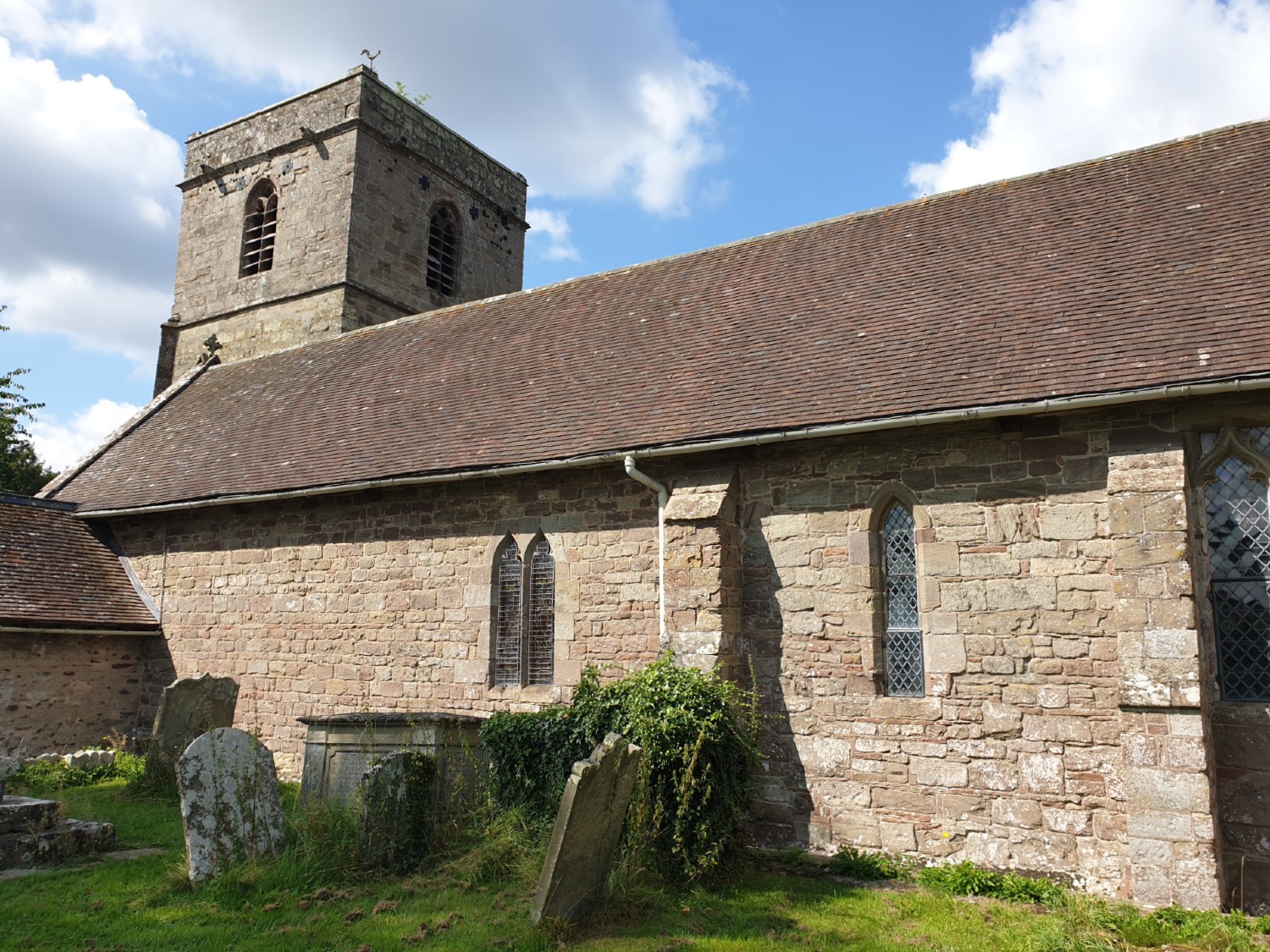
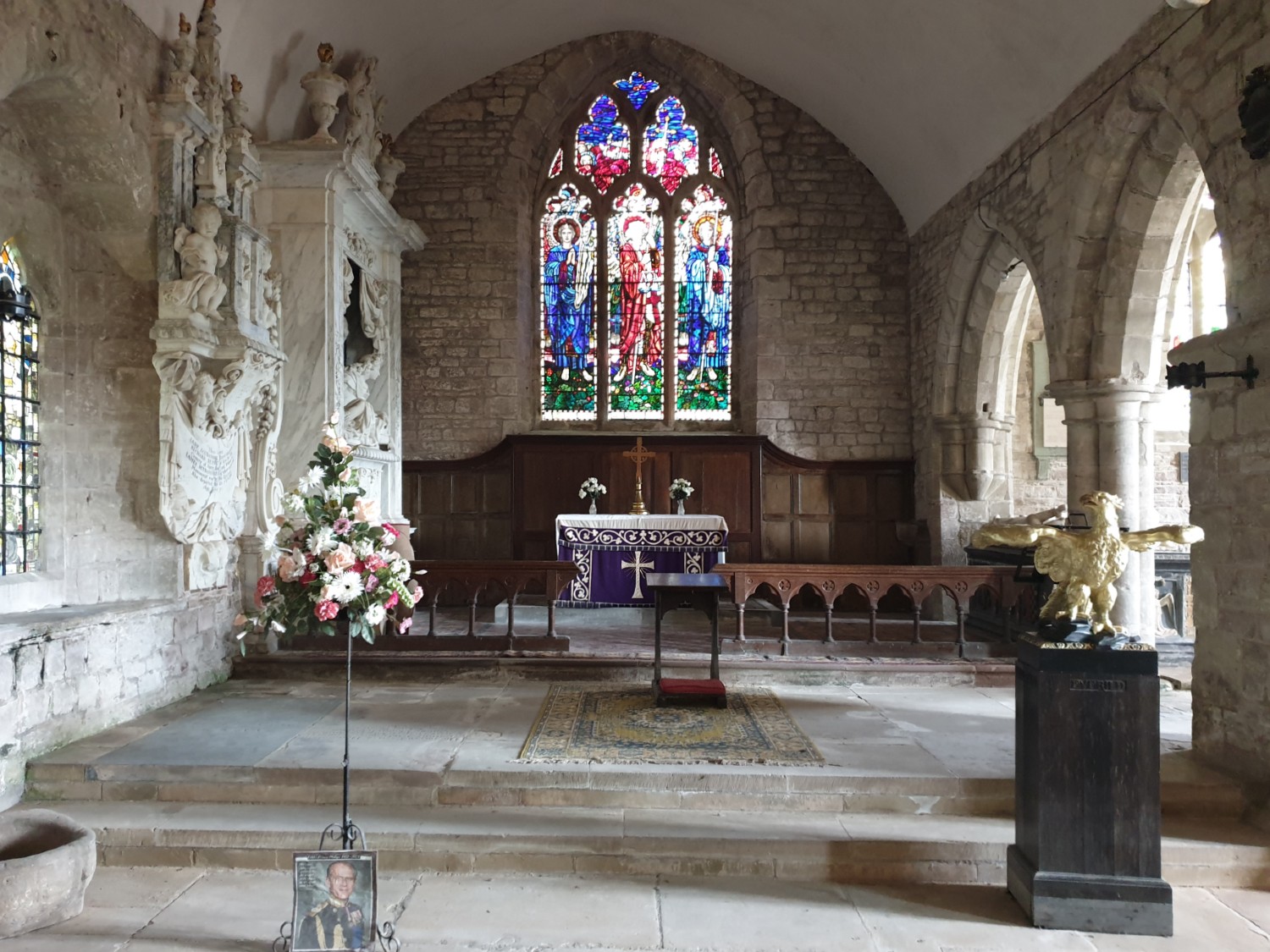
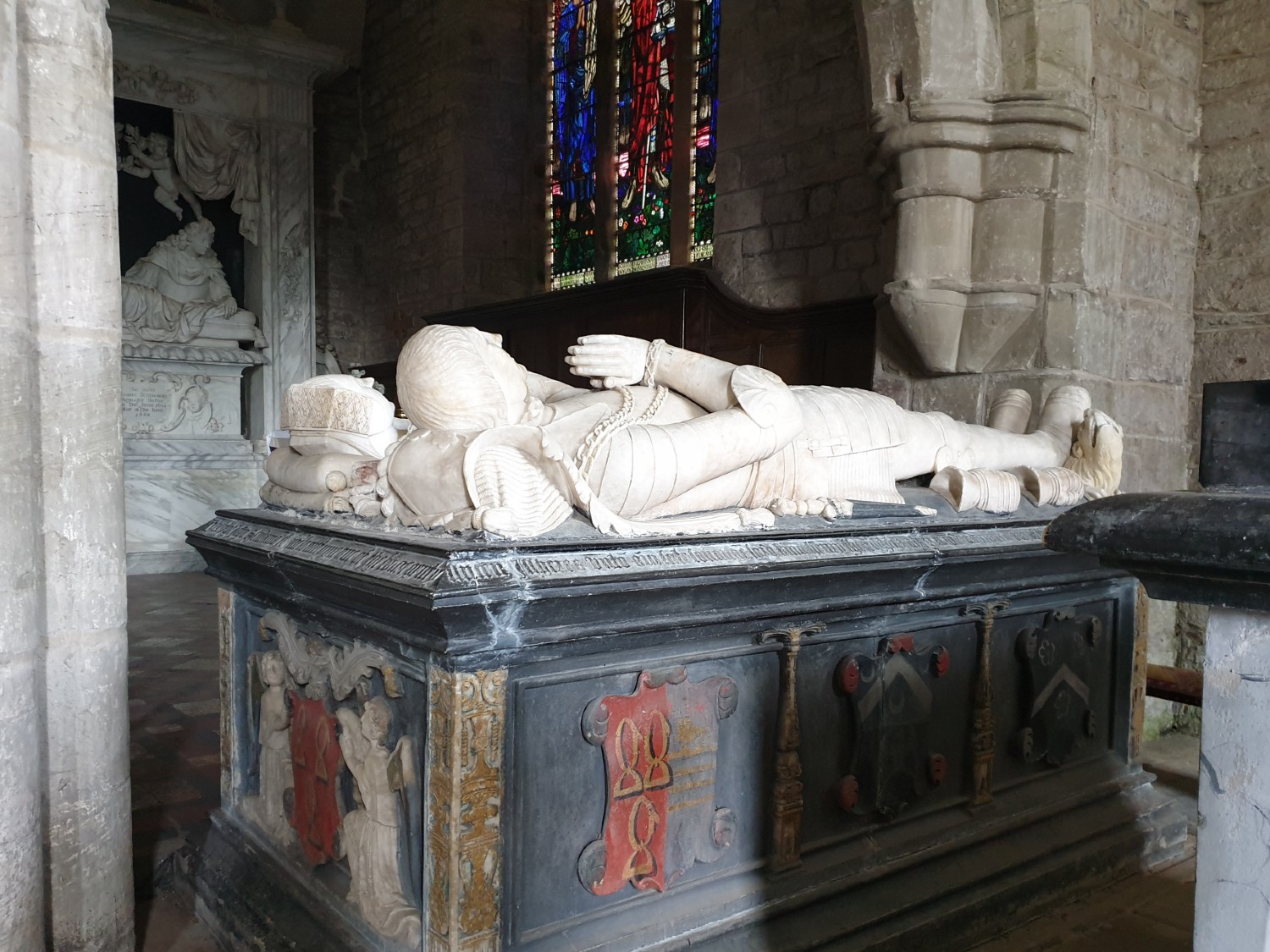
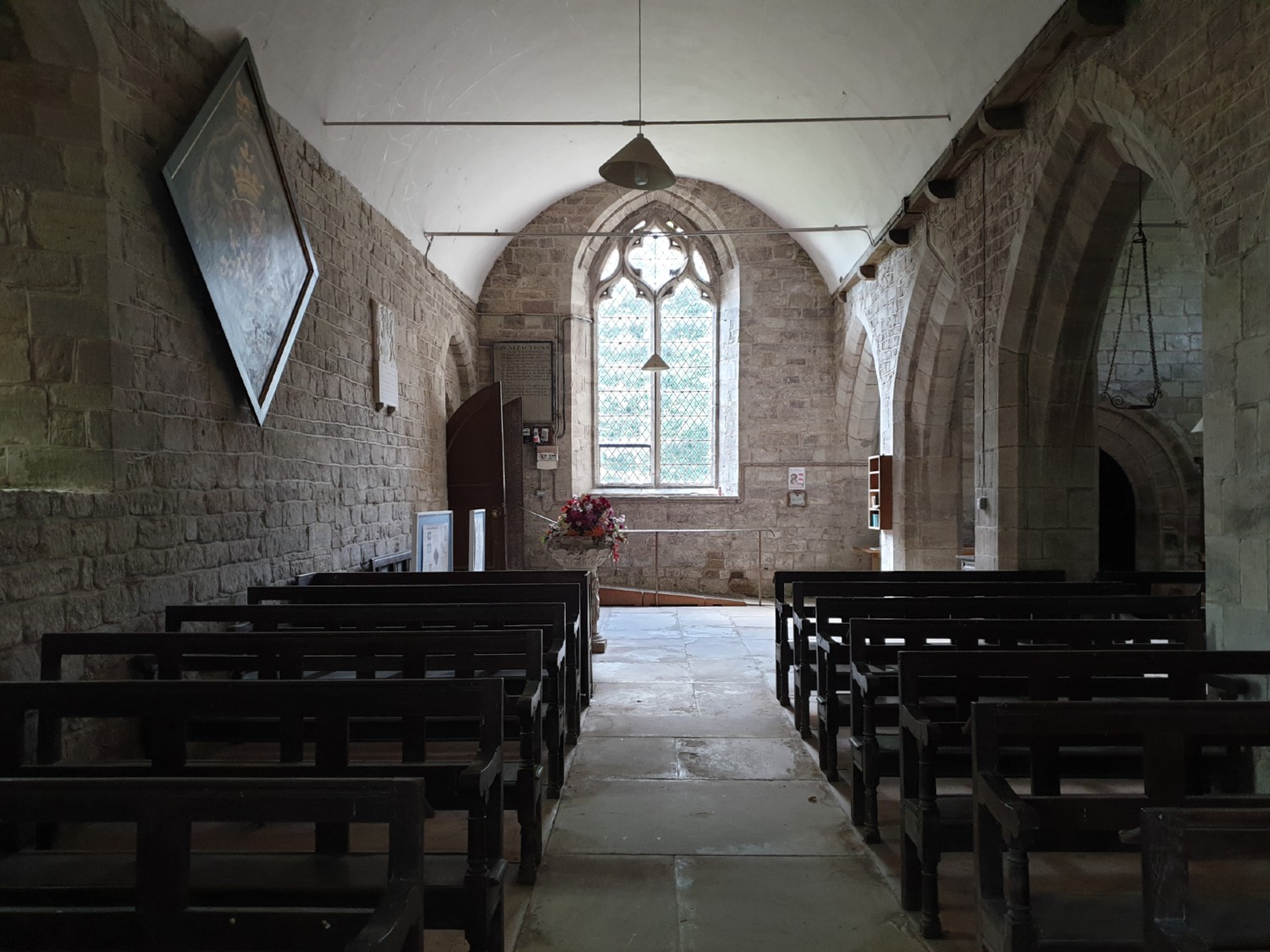
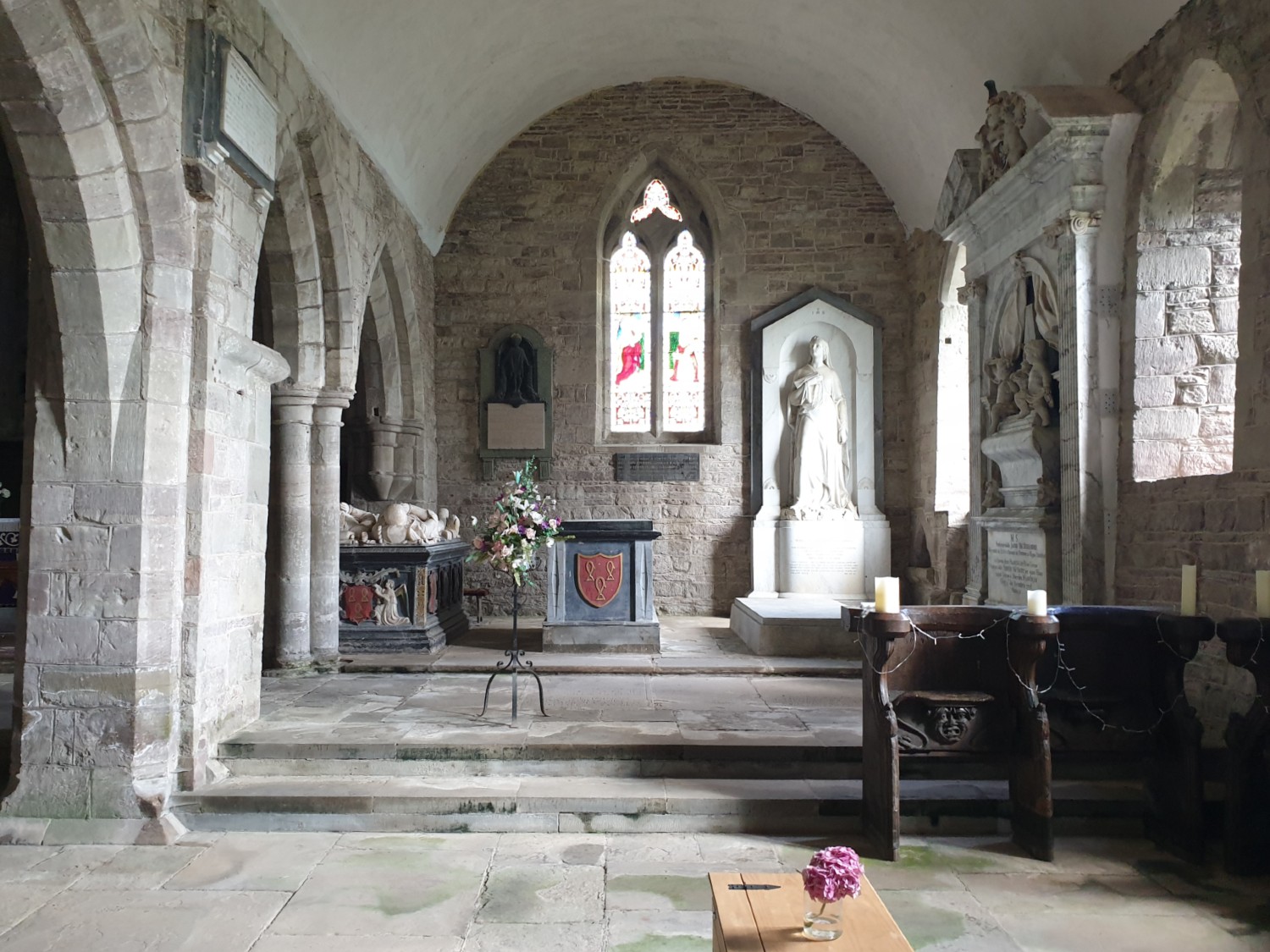
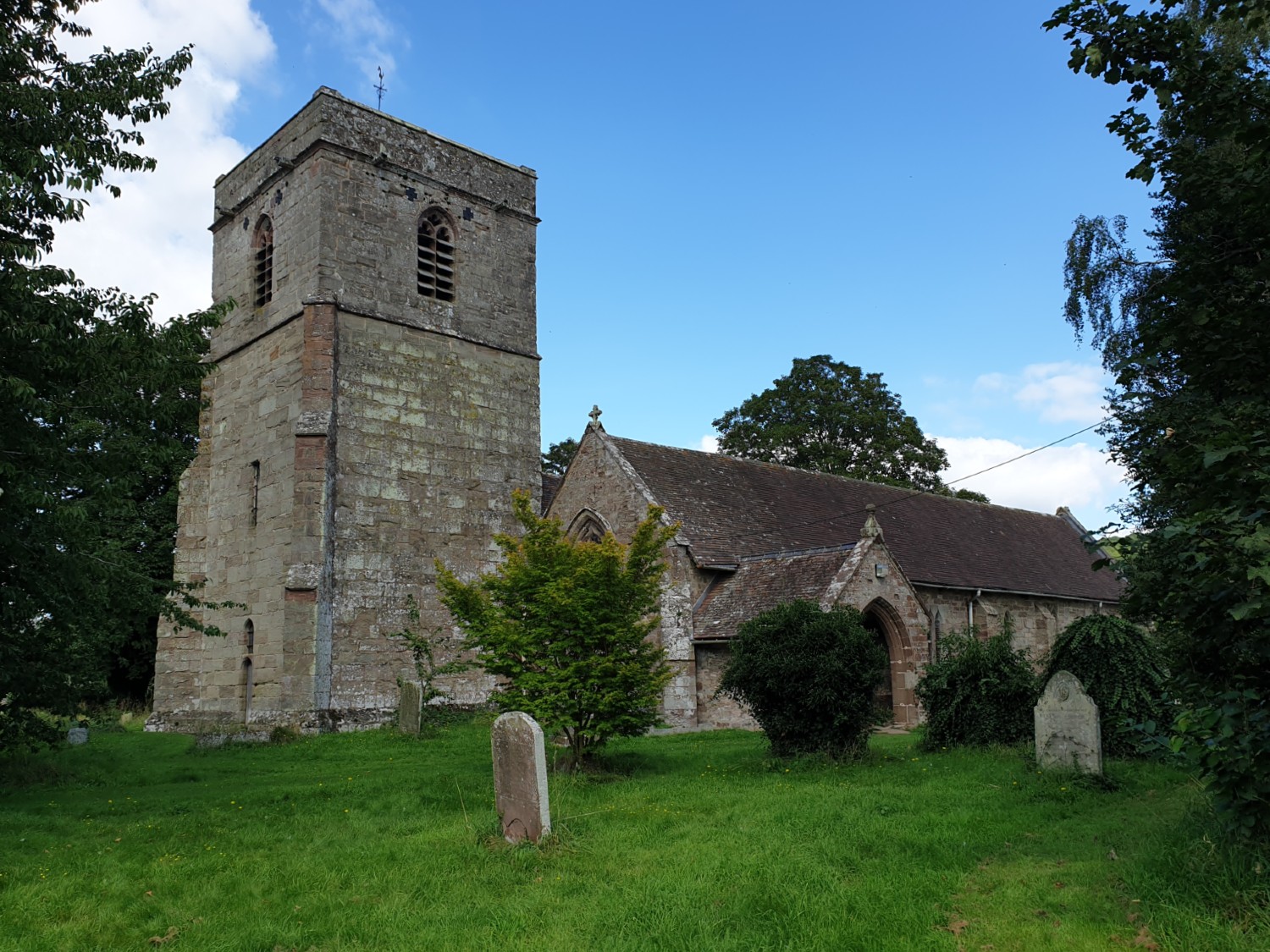
St Cuthbert's Church, Holme Lacy....Map
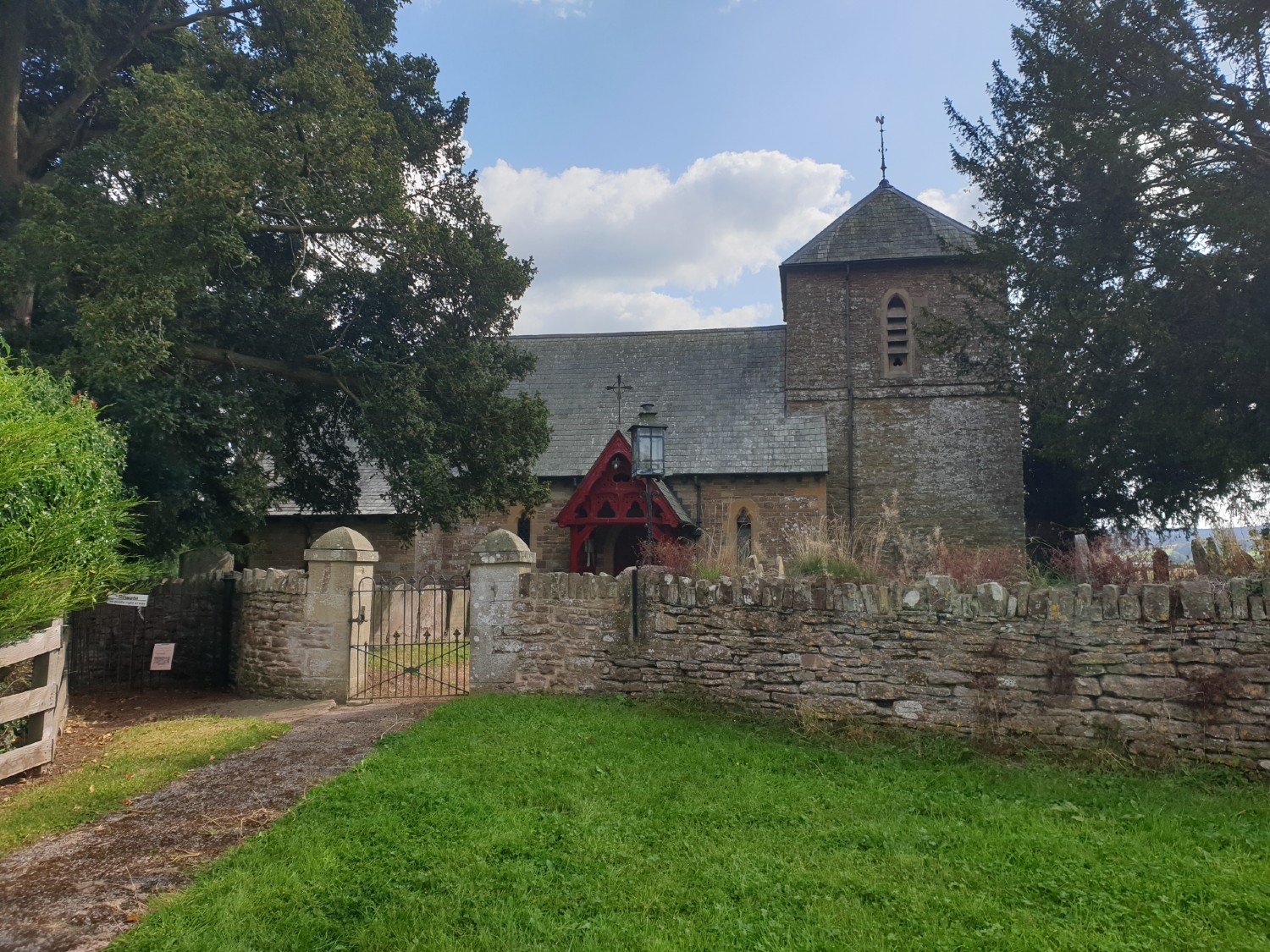
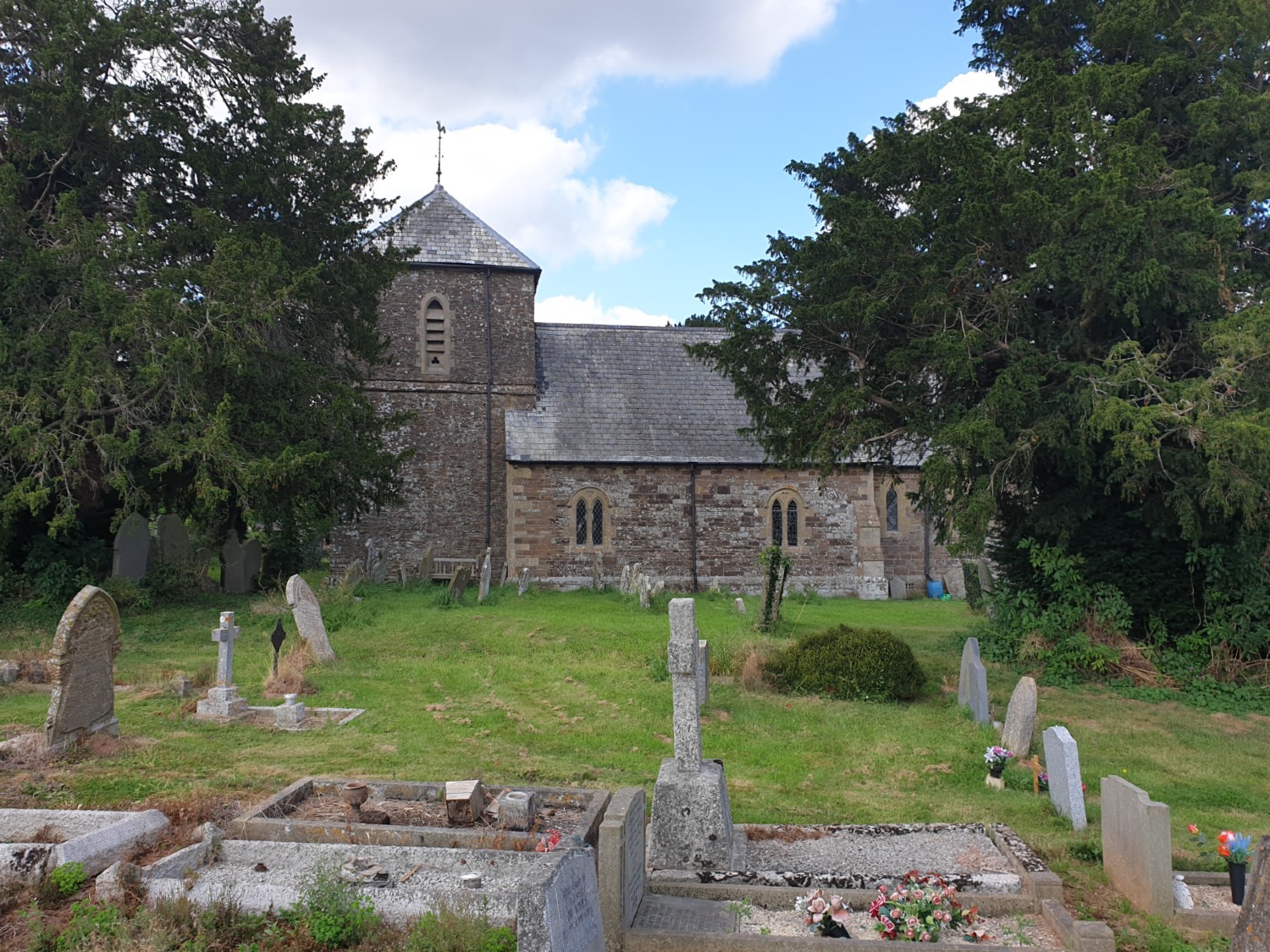
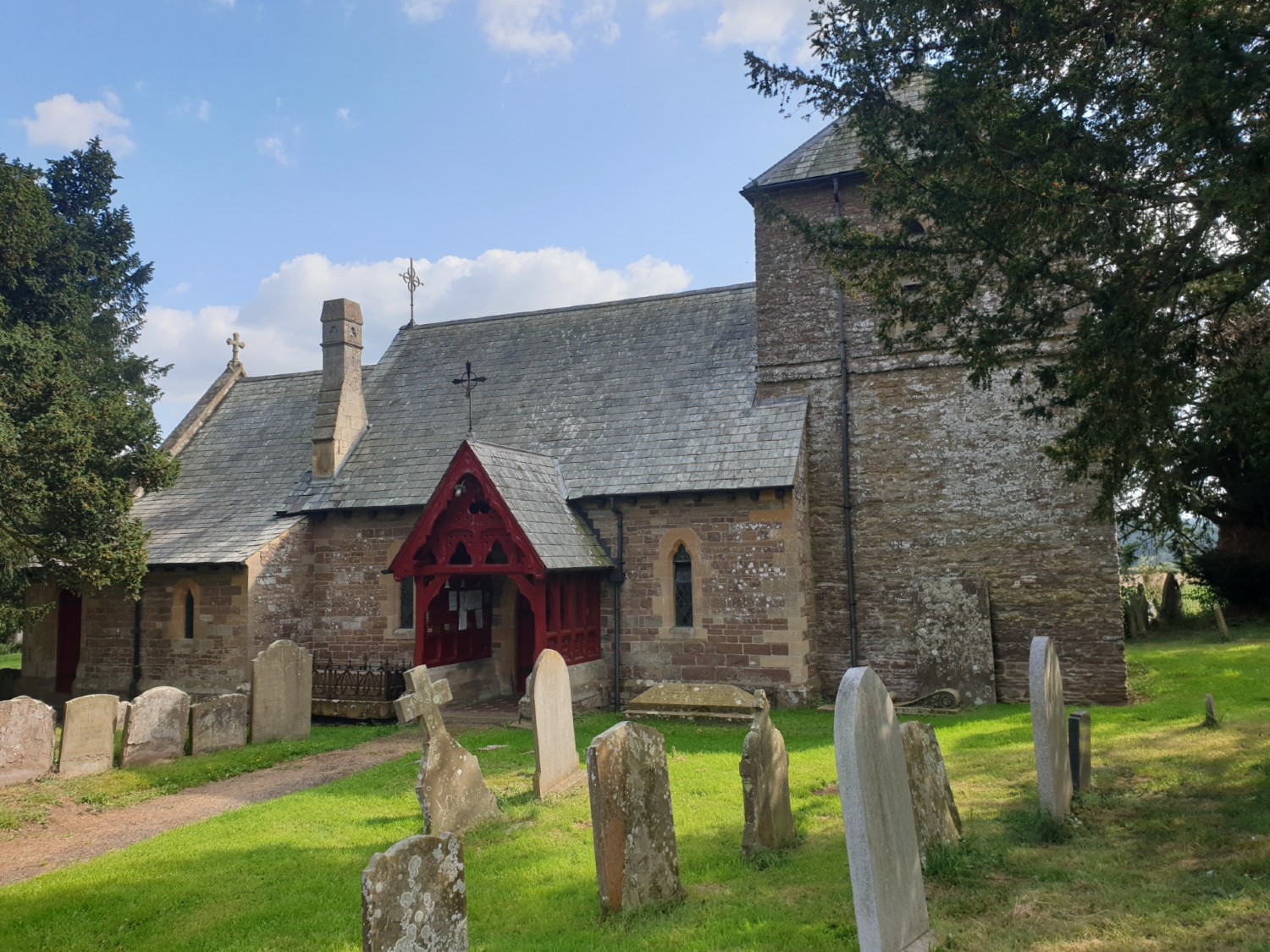
St Andrew’s Church, Dinedor....Map